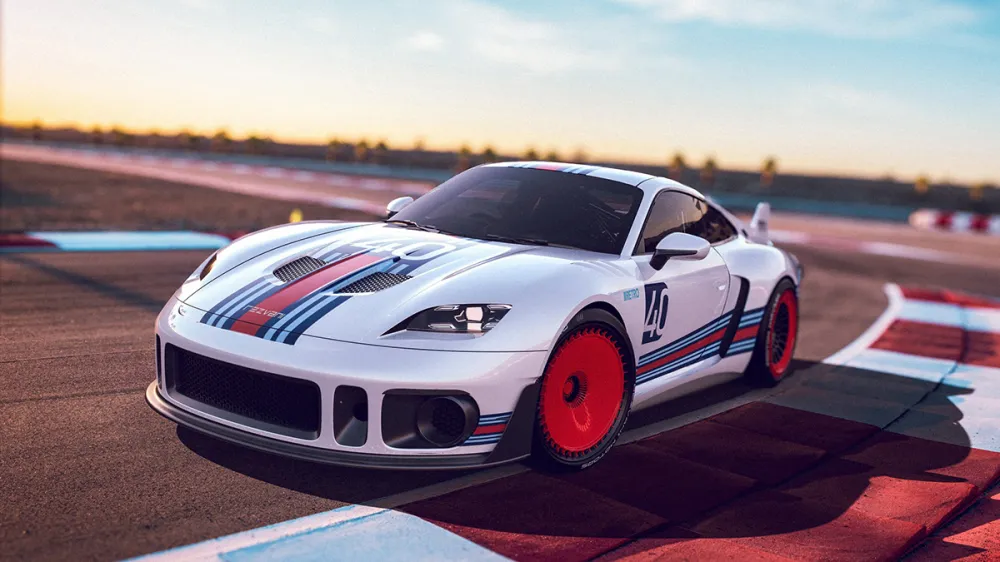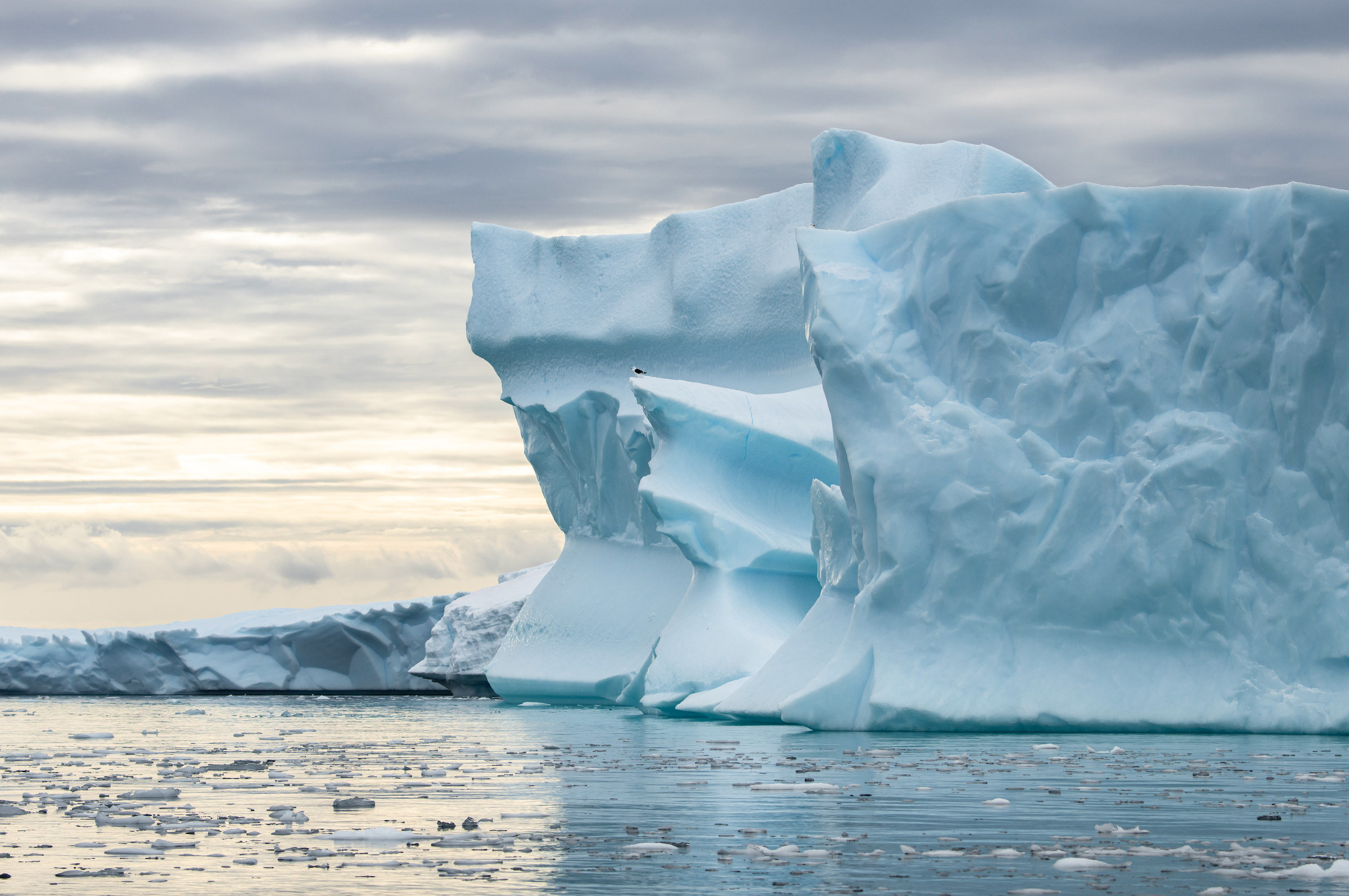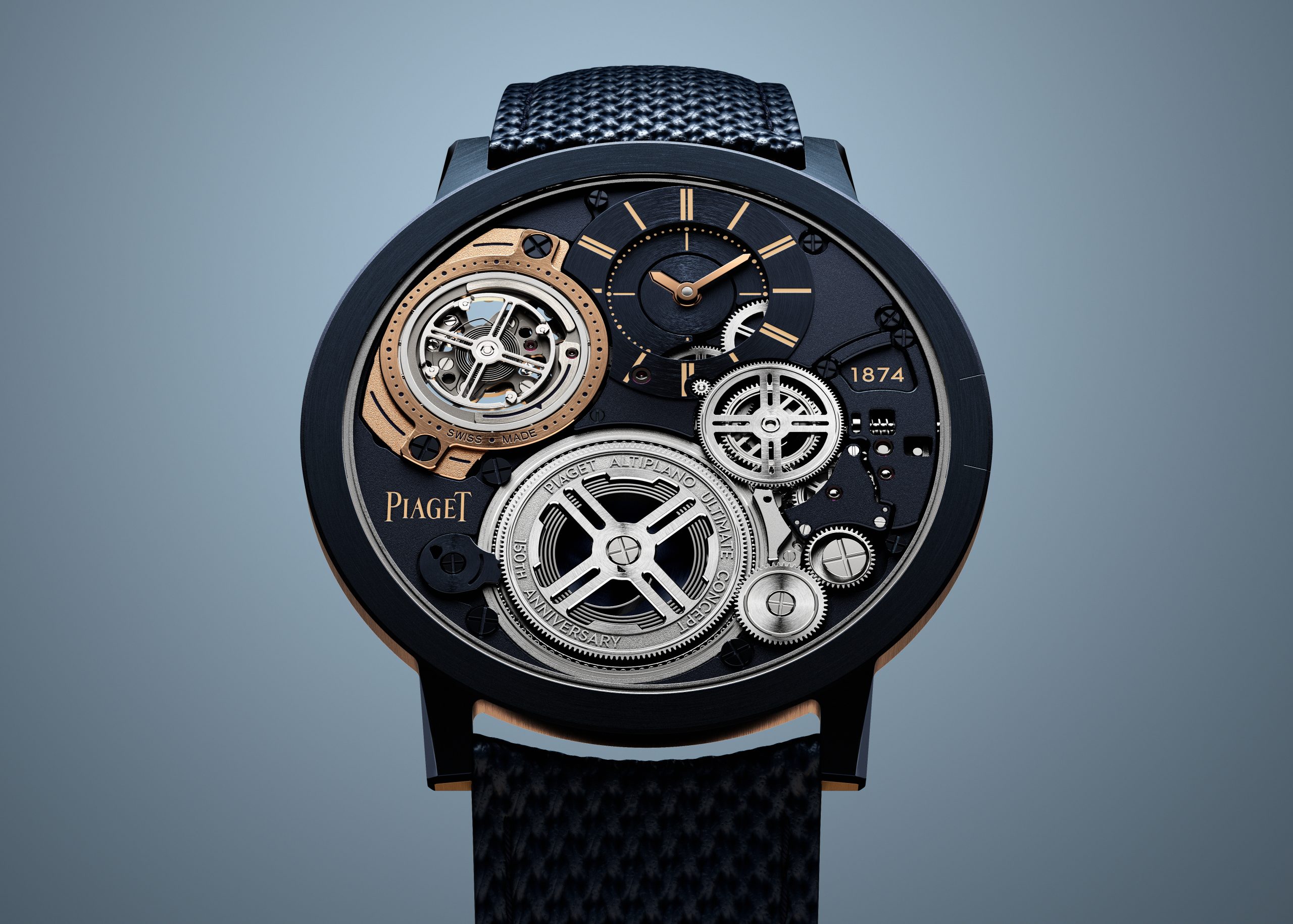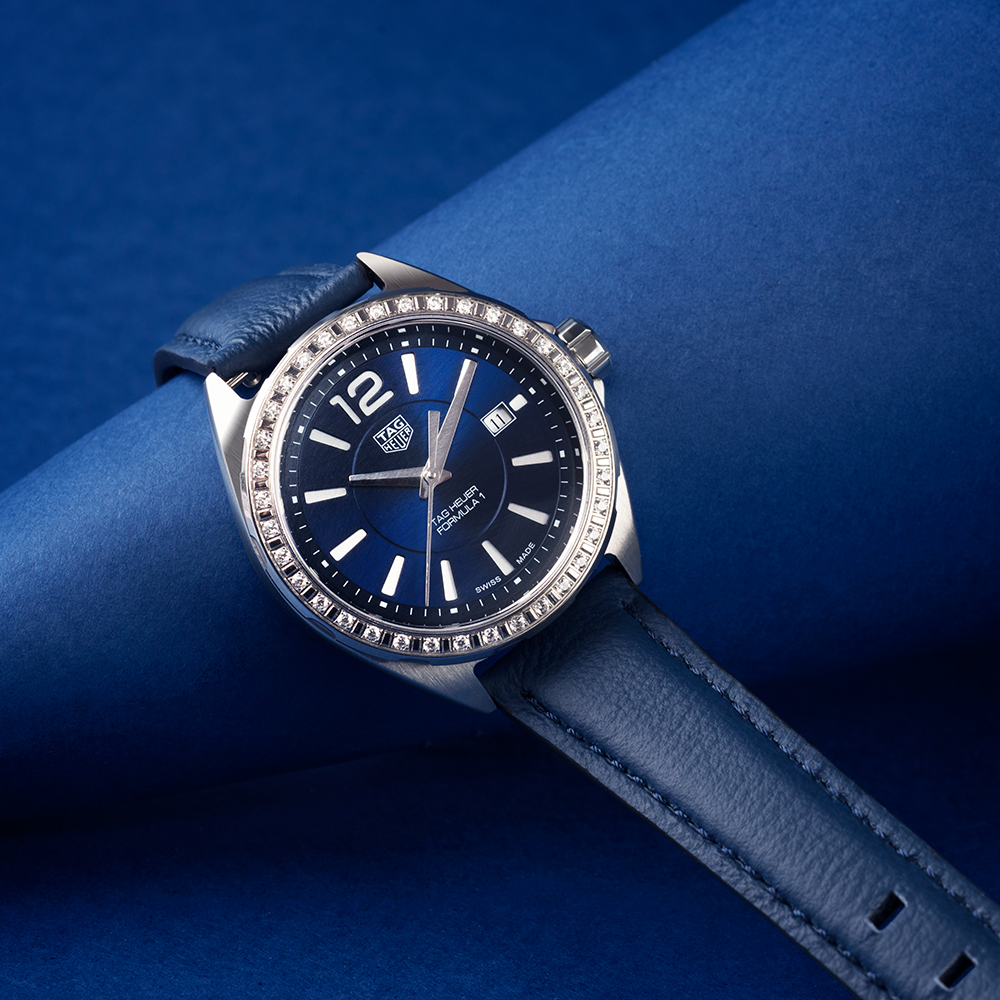
The ultimate Christmas gift guide
Start ticking off your Chirstmas list with this luxury gift guide.
Inspired choices: For those hard-to-buy-for friends, family, colleagues, neighbours…
VEUVE CLICQUOT GOUACHE LIMITED EDITION
Yellow Label Gouache $80, Rosé Gouache $100, thechampagnecompany.com
French champagne house Veuve Clicquot takes the artistry of its trade to another level with the Gouache edition, presenting a bottle of its trademark Yellow Label, or the delicate Rosé, in a container shaped like a paint tube (gouache is a type of artist’s paint). A beautiful keepsake for any true artist – although with the distinctive container also able to keep the precious liquid chilled for up to two hours, there’ll be no judgement from us if this gift doesn’t make it past New Year’s Eve.

MONTBLANC MEISTERSTÜCK LE PETIT PRINCE SPECIAL EDITION
From $960 to $2400, montblanc.com
The storied German pen maker celebrates one of the most globally loved children’s books, Antoine de Saint-Exupéry’s Le Petit Prince, with a range of pens based on its famous Meisterstück range. Graphic elements etched into the case symbolise key characters and powerful messages from Le Petit Prince, the enchanting tale of a chance encounter between a pilot and a little prince from a distant planet, which has been translated into more than 250 languages.

AL NASSMA CAMEL MILK CHOCOLATE
From $13.50, gourmetlife.com.au
You could preach the health benefits of camel versus cow milk: the former, slightly saltier in taste, carries five times the vitamin C and 10 times the iron, and lacks the proteins that cause many dairy allergies. Or impress with the fact that camel milk is seven times more expensive. Then describe the logistical effort in creating fine chocolate, with zero additives or preservatives, in the 50°C summers of Dubai. Or you could just let Al Nassma chocolate, the first of its kind, speak for itself. It’s available in white, milk or dark varieties, with a choice of authentic fillings including dates, pistachio and coffee. The wooden casket gift box ($98) and 700-gram camel figure ($119) provide the perfect presentation.

JAGUAR E-TYPE – 50 YEARS OF A DESIGN ICON
$74, jaguar-merchandise.com.au
Enzo Ferrari once famously said: “The Jaguar E-Type is the most beautiful car ever made.” More often described simply as “sex on wheels” (and going at it again in the ’90s as Austin Powers’ ‘Shaguar’), the E-Type’s significance in both automotive and popular culture is celebrated in Jaguar E-Type – 50 Years of a Design Icon (FP Creative). It’s a fascinating and fitting tribute to a car that was as technically advanced as it was beautiful.
MUNGO AND MAUD PET ACCESSORIES
From $205, mungoandmaud.com
Inspired by primary colours and elementary school, British brand Mungo and Maud’s newest collection is the perfect way to spoil your dog this Christmas – in advance of next winter. Mungo and Maud strive to ensure that style is not sacrificed for practicality, as is effortlessly demonstrated by the beautiful Quilted Coat (small, around $205; large, around $240) in navy blue – a simple cotton-blend fabric coat, uplifted with a chic, chintz finish. It is water repellent, with a Velcro closure and underbelly protection. No less dignified is the Beetle Coat (around $260-$278), cheerful in cherry red, but also available in grey and olive. It has button detailing and a sporty puffer finish; your pug will be snug as a bug.

LARK DISTILLER’S SELECTION 500ML TASMANIAN WHISKY
$170, larkdistillery.com
Australia is gaining a well-earned reputation internationally for its beautifully crafted whiskies. But supply is running far behind demand and it’s tough to get your hands on anything truly special. This bottle hails from the very cradle of Australian whisky – the Lark Distillery in Tasmania, presided over by Bill Lark, the man who started it all. Lark Distiller’s Selection is sweet and fruity on the nose, with smooth chocolate and salted caramel across the palate and a big oak finish. Presented in a beautiful gift box, it’s Tasmania in a bottle.

Style statement:The most covetable fashion and accessories with which to stuff stockings.
FENDI LOGO PRINT PIECES
From $1750, fendi.com
If you like your fashion with a capital F, make a statement this summer in one of Fendi’s playful twists on its logo. The colourful Heart Print Shirt ($1750) is a flattering pyjama-top style in teal and gold, while the F Print logo trench ($7300) and Logo Off The Shoulder dress ($4800) come in classic Fendi brown and tan. The three pieces perfectly showcase the mix of wit and heritage that has come to define the Italian brand jointly helmed by Silvia Venturini Fendi as creative director of accessories and menswear and Karl Lagerfeld as artistic director.
SARAH & SEBASTIAN EARRINGS
From $1590, sarahandsebastian.com
Once best known for its barely-there delicate jewellery, Sydney brand Sarah & Sebastian has recently begun exploring larger statement pieces. The New Tidal earrings ($1590) feature an organic, warped silhouette with a sandblasted textured finish, and the colourful Double Prism earrings ($2800) in nine-karat yellow gold with semi-precious rainbow stones are perfect for Christmas Day and beyond. Wear them with everything from a breezy white summer dress to a glamorous cocktail gown for functions over the entertaining season.

CDLP SEA ISLAND BOXER SHORTS
From £70, matchesfashion.com
The Stockholm-based brand CDLP has the perfect Christmas gift – its limited-edition Sea Island Cotton Boxer Shorts (from £70). Sea Island Cotton is one of the rarest and most luxurious in the world, accounting for just .0004 per cent of the world’s cotton supply. With silky lustre and a fine uniform texture, these boxer shorts are luxurious and extremely comfortable, thanks to cotton grown in the West Indies and handcrafted by textile artisans in Portugal. The shorts are modern and elevated in design, with a slim silhouette. They are sure to be a Christmas favourite.

LOUIS VUITTON SHAWLS
$605, louisvuitton.com
While summer days are long and warm, the evenings can turn chilly, making a shawl
a smart as well as stylish accessory. Louis Vuitton’s Monogram Shine Shawl ($840)
with an ombre-effect monogram pattern has a subtle shimmer thanks to the use of a soft-shine yarn, while its Pop Monogram Square ($605) is a playful twist on the house’s iconic patterns. The central Monogram Flower comprises a joyful mix of straps, locks and chains in a riff on the historic leatherwork codes of the house, and the addition of dots and stripes give a fresh update to the much-loved Louis Vuitton monogram.
BOTTEGA VENETA INTRECCIATO BUTTER CALF BACKPACK
$4190, bottegaveneta.com.au
Speaking of house codes, Bottega Veneta’s Intrecciato leather weaving technique is as iconic as they come. This Intrecciato Butter Calf Backpack ($4190) features a panel showcasing the Intrecciato technique on the front and has a top handle and adjustable backpack straps. With a front zip pocket, interior zip pocket and three interior slip pockets, there are plenty of clever storage options, making it easy to keeptrack of documents and essential items. A perfect travel companion, the made-in-Italyaccessory is ideal for an active lifestyle, or simply for anyone who appreciates clever and refined design.
LOCK & CO. ROLLABLE PANAMA HAT
$450, lockhatters.co.uk
Costing anywhere between $400 for a very good example to $25,000 for the finest, at either level, a quality Panama hat represents something of an investment. It’s also quite tricky to travel with and prone to being crushed, which is why we recommend the natty, easily transported rollable style. Lock & Co. of St James’s, London, the oldest hat shop in existence (established 1676), stocks and ships internationally an excellent entry-level rollable Panama. Priced at £250 ($450), it’s of sufficient quality that you’ll be able to hold your head high, but not so eyewateringly expensive that you’d shed too many tears should it happen to be swept away by the Caribbean breeze. For the fearless aficionado who laughs in the face of tropical squalls, however, Lock also purveys a rollable Superfino Panama, handcrafted in Montecristi, Ecuador and priced at £1195 ($2160).

BERLUTI FAST TRACK TRAINERS
From $1700, matchesfashion.com/au
Be bold this Christmas with Berluti. The Parisian fashion company has expanded its men’s shoe collection this season with the Fast Track Trainer Shoe (from $1700); a beautiful hybrid of the Oxford shoe and a sports trainer. It is a uniquely contemporary dynamic that breaks the rules. Each shoe is Italian-crafted from Berluti’s Mogano leather with decorative perforations, a two-hole lace-up front and a tan-brown, white and black rubber sole. Available through MatchesFashion, this shoe would be the perfect gift this Christmas.

LOEWE FLAMENCO KNOT TOTE BAG
$2495, parlourx.com
Loewe demonstrates its meticulous craftsmanship this Christmas with the gorgeous caramel leather Flamenco Knot Tote Bag ($2495). It is both surprisingly spacious and wonderfully stylish. It is accented with the Loewe debossed anagram logo while the rolled leather top handles thread through the sides of the bag, with the trademark flamenco knots enriching the otherwise smooth silhouette. Crafted from soft natural calfskin, it features a suede lining and black lacquered edges. The colour, size and shape of the bag make for the perfect everyday companion to a classic, yet contemporary, wardrobe.
A pink Christmas: Pink diamonds are extremely rare and up to 20 times more valuable than white diamonds and the Argyle mine in Western Australia produces around 90 per cent of the world’s supply. They have been treasured throughout history by royalty (the 23-carat Williamson diamond is currently owned by Queen Elizabeth II) and are also favoured today on the red carpet by celebrities from Mariah Carey to Blake Lively. Dare we say it: an eternal gift.
VAN CLEEF & ARPELS
vancleefarpels.com
The fairytales of the Brothers Grimm provided the inspiration for the new Quatre contes de Grimm high jewellery collection by Van Cleef & Arpels. The French luxury brand reinterpreted four tales – The Twelve Dancing Princesses, The Golden Bird, The Three Feathers and The Town Musicians of Bremen – in a series of pieces featuring the birds, animals and princesses that inhabit the stories. The collection continues the house’s tradition of taking inspiration from art and culture, in particular the worlds of ballet and dance. Charming examples from this collection are the Princesse Eos, Princesse Danica and Princesse Hemera clips, each representing one of the 12 princesses from the brothers’ tales.

PINK KIMBERLEY DIAMONDS
pinkkimberley.com.au
An Australian family-owned company, Pink Kimberley Diamonds was founded in 1967 with a vision for prestige and exquisite jewels. From the company’s Pink Kimberley collection, the Chantilly ring ($157,731) was a finalist in the Red Carpet category of the recent Diamond Guild Australia Jewellery Awards. Other breathtaking pieces include the Corowa earrings ($19,780), the Cybele pendant ($30,461) and the Peyton ring ($66,696).

FAIRFAX & ROBERTS
fairfaxandroberts.com.au
Fairfax & Roberts first opened for business in 1858 on Sydney’s George Street, initially as a watchmaker and soon after, a creator of fine jewellery. Today the company is renowned for its customdesigned pieces, often featuring pink diamonds. Current pieces include a ring in 18-karat white and rose gold with a fancy orange pink pear-cut centre diamond and an Argyle Pink Diamond halo ($138,600); a platinum and diamond pendant featuring a pink diamond centre and 22 round brilliant-cut diamonds ($17,800); and a ring in 18-karat white gold with a 3.51-carat cushion centre diamond and two heart-shaped pink diamonds ($168,900).
J FARREN-PRICE
jfarrenprice.com.au
In Muzo Emerald Colombia and Argyle Pink Diamonds, two of the world’s most prized stones come together in this collection sold by J Farren-Price (a founding
member of the Diamond Guild Australia). The collection, which includes an 8-carat pear-shaped ring and a 15-carat emerald-cut design, is the second J Farren Price collection to marry the seductive qualities of both diamond brands. Other Argyle Pink Diamond pieces include a stunning jade and Argyle Pink Diamond dress ring and a matching necklace, and a number of rings, of which an emerald-cut Argyle Pink Diamond Ring ($725,000) and a round-cut Argyle Pink Diamond and white diamond ring ($538,000) are particularly spectacular.

PASPALEY
paspaley.com
Paspaley is renowned for its South Sea cultured pearls – which are among the most beautiful in the world – but the Australian jeweller also incorporates exquisite stones into many of its pieces. At the heart of each collection is the bounty from the Pinctada maxima pearl oyster, found only in the Kimberley but pink diamonds are regularly sprinkled through each collection. Examples include a pair of earrings with pink diamonds of 1.459 carats, two 15mm Paspaley pearls and 32 white diamonds of 2.186 carats ($93,800); and a necklace with pink diamonds of 0.8 carats, white diamonds of 1.09 carats and a spectacular 17mm baroque Paspaley pearl ($92,800).

MONDIAL
mondial.com.au
Australian jeweller Mondial began when Fred Neuman and his wife Maria opened a jewellery store named Carina Jewellers in 1962 in Sydney. In the ’70s the Neumans shifted their focus to jewellery wholesaling, during which time they developed a love of coloured gems – and today they lavish that love specifically on pink diamonds. Mondial in Sydney’s Queen Victoria Building is a treasure trove of pink beauties, including a ring featuring a radiant-cut Argyle Pink Diamond of 0.89 carats surrounded by eight ovals of 3.67 carats ($POA), and a classic feminine engagement set with an Argyle Pink Diamond ring and matching pink diamond wedding band ($26,000 for the set)


Marking Time: Both practical and aesthetically pleasing, timepieces make the ultimate lasting gift statement
ULYSSE NARDIN EXECUTIVE SKELETON TOURBILLON HYPERSPACE
$70,000, ulysse-nardin.com
First gaining renown in the 19th century as a trusted purveyor of marine chronometers to seafarers, Swiss watchmaker Ulysse Nardin’s latest timepiece takes inspiration from ships of another sort — spacecraft. Encased in ultra-light titanium, the Executive Skeleton Tourbillon Hyperspace, which debuted at the recent 2018 Cannes Film Festival, draws cues from the Millennium Falcon piloted by Han Solo in the Star Wars saga. Its open-worked design, and less-is-more UN-171 manufacture movement with a flying silicium ‘hyperspace’ tourbillon is redolent of the stripped-back aesthetic of the famed starship that “made the Kessel Run in less than twelve parsecs” (or
so rakish smuggler Solo claimed). Available in three colourways, the force is strong in this one.

TAG HEUER FORMULA 1 LADY
From $2700, tagheuer.com
In a recent interview with Robb Report Australia & NZ, watch industry legend Jean-Claude Biver (who retired from a highly successful run as TAG Heuer’s CEO in September) remarked: “There’s a new generation that is coming, and we have to work to address and to communicate with this generation. Because if we cannot get them attracted to the idea of a watch when they are 18, 25 or 30, how can we sell them a watch later?” With its easily interchangeable straps, fashionable ‘luxeathleisure’
aesthetic and accessible price point, TAG Heuer’s new quartz-powered Formula 1 Lady will undoubtedly appeal to this new customer. Once again, Monsieur Biver comes up with a winning formula.

VACHERON CONSTANTIN FIFTYSIX DAY-DATE
From $16,700, vacheron-constantin.com
A handful of other watch companies can lay claim to having been registered at
earlier dates. However, as each of them paused production for a time, it is Vacheron Constantin – established in 1755 – that holds the title of world’s oldest watchmaker in continuous operation. While best known for its traditional timepieces, the storied manufacture asserted its contemporary bona fides with the new FiftySix range launched at this year’s SIHH watch fair. Though elegant and classic, the line is nevertheless squarely aimed at a new, younger customer. While FiftySix prices start at an amazing $16,700, if you’re feeling particularly generous (to the tune of $48,000) towards a millennial this Christmas, may we suggest considering the beautiful FiftySix Day-Date in 18K pink gold?

JAEGER-LECOULTRE ATMOS 568 CLOCK BY MARC NEWSON
Available from J Farren-Price, from around $40,000, jfarrenprice.com.au
Perhaps the ultimate gift for the lover of late-20th century design, one of the
dozen or so examples of Marc Newson’s iconic Lockheed Lounge will set you back
more than $3.5 million, if recent auction results are any indication. Sound a little extravagant? Fortunately, Jaeger-LeCoultre has provided a more affordable route to installing a Newson rarity in the home of your nearest-and-dearest design aficionado. JLC’s latest collaboration with the famed Sydney-bred creative genius sees Newson again reinterpret the Atmos clock — a veritable perpetual motion machine, powered by changes in atmospheric pressure, and encased in curvaceous Baccarat crystal.

A home run: Add to list … Sculpture, storage and safe-keeping
GIOBAGNARA SCULPTURE
$3300, beckerminty.com
Noble materials, graphic lines … Interior architect and designer Stéphane Parmentier began his career working for Karl Lagerfeld. He’s now the artistic director of Giorgio Bagnara’s design outfit, Giobagnara, and this season’s creations include Tabou Sculpture 3, a 72cm tall study in leather, suede and bronze. Parmentier’s work borrows from Greco- Roman antiquity, Puglian landscapes and Japanese artistic restraint, but still manages to convey that Italian art of living.

DEDON FEDRO CHAIR
From $1395
Call it a rocker (it balances on two skids), a beach chair or a picnic
essential, the stackable ‘Fedro’ seat from homemakers Dedon has all the colour and charisma of a Costa Rican rainforest. Its weatherproof, colourfast woven fibre is stretched over an aluminium frame and has a comfortable quick-dry fabric headrest. Designer Lorenza Bozzoli took her cue from something right in front of her nose – a son playing a video game on TV while balancing on the seat of a chair without legs. Fedro borrows its colours from three birds of paradise – the flamingo, the hummingbird colibrí and the quetzal.

VERSACE HOME TREASURES
palazzocollezioni.com.au
Everyone needs a treasure chest. And no one is going to do one quite like Versace. ‘Medusa’ ($1700) announces itself with a signature Versace 24-karat gold-plated clasp, a case in aqua cow leather printed with a crocodile-skin pattern and a fabric lining with signature opulent black and gold Barocco print. Assuming you have change left over from shopping our pages, here’s the porcelain money box to hide it in. ‘Break the Bank’ ($272) is new from a gift collection by
Rosenthal meets Versace, which says it all. Both belong to the Versace Home range, on show in Sydney in Waterloo and at Sheraton on the Park.

COCO REPUBLIC FINISHING TOUCHES
cocorepublic.com.au
Coco Republic is a one-stop shop when all your friends are homemaker types. The candles, cushions and vases won’t be re-gifted. So let the hankering begin … with a sumptuous Timothy Oulton faux fox throw ($415), which looks inviting whether tossed over an armchair or the edge of a bed. It’s incredibly soft and snuggly, and no foxes were harmed in the process. Also to love is the 15-kilo Frye table lamp in clear crystal with a cap of vintage brass sheeting cut to look like a dripping candle; the shade is white microfibre ($1210).

Kitted out: For the technocrat in your life, only the latest and greatest will do
HASSELBLAD X1D FIELD KIT
$24,995, hasselblad.com
If you’re looking for the ultimate camera for your travels, you can’t go past this starter kit from the fabled Swedish brand Hasselblad, whose long-lived H-series captured some of the most iconic images on earth (and off it, as NASA’s official camera of the Apollo missions). At the heart of this field kit is the brand’s new-generation X1D-50c camera, which here comes with a Pelican carry bag and three different lenses: XCD 3.5/30, XCD 3.5/45 and XCD 3.2/90. There are also a couple of batteries so you never run out of juice, and a plethora of cleaning accessories to keep the dust and grit away while on safari.

CHILLI ISLAND
Approx US$15,000, chilliisland.fr/en
Chilli Island is a motorised floating deck chair that can comfortably accommodate two people for a leisurely float/ cruise, with no boat licence required. Measuring approximately 2.5 metres in diameter and weighing 300 kilograms, it comprises a fibreglass internal frame and polyethylene body. Overhead, adjustable palm fronds provide shade and there’s a built-in ice bucket, cup holders, 80-watt sound system, LED lighting and an underwater camera. Chilli Island is propelled by a Torqeedo electric motor, available in 0.5kW and 1kW options, with a pair of 300Ah batteries that keep it operational for up to six hours. The fun begins by creating your custom Chilli Island via a dedicated app.

DJI MAVIC 2 DRONE WITH DJI GOGGLES RACING EDITION
$3358, store.dji.com
Five years ago, a drone of this quality would easily have set you back at least $15,000 – so it’s quite incredible to see DJI push the envelope so quickly. The Mavic 2 is by far the best consumer drone on the market, and the crystal-clear Hasselblad 4K camera can take images up to seven kilometres away thanks to a 31-minute flight time. We’ve seen this drone hit altitudes above 1500 metres, and the new auto tracking technology means you can just throw it up in the air, set it to follow you, and then let it do its work. Add in a pair of DJI Goggles and it’s like being in the
drone; you can even control its flightpath with head motion. An amazing, must-have piece of technology.

BANG & OLUFSEN BEOSOUND EDGE
$5000, bang-olufsen.com/en
B&O is renowned for delivering stunning audio quality on a larger scale, but this wi-fi-enabled speaker dials things down a notch. It’s relatively small, with a minimalist circular aluminium design and a circumference of just 50cm. But crammed within is an active 10-inch woofer design with bass port, twin threequarter- inch tweeters, twin four-inch mid-range tweeters and six Class D amps. Expect this small disk of Danish design to punch out seriously loud and clear music. Best of all it has touch controls and motion sensors, and you can adjust the volume by rolling it up and down the wall, where it’s held in place by an invisible mount.

TECHNOGYM SKILLBIKE
$5995, technogym.com/skillbike
Indoor cycle trainers don’t really mimic the exact performance of cycling, but the Technogym SKILLBIKE changes all that. It’s the first indoor bike with real gears, known as ‘Real Gear Shift’ technology, which replicates the challenges of uphill riding. This is tied to the ‘Multidrive Technology’ that allows riders to flick between a power-based routine to authentic hill climbing situations. It may look like a light-cycle from Tron, but the ergonomic design perfectly represents real riding position, while the seven-inch LCD monitor provides a wealth of information, from heartrate to distance travelled (including vertically). And even better, there’s no worry about near-misses with inattentive drivers.

HUMMINGBIRD E-BIKE
£4495, hummingbirdbike.com
British company Hummingbird – which produces the world’s lightest folding bicycle, at 6.9 kilos – has outdone itself with an electric version weighing just 10.3 kilos. That’s still lighter than the average commuter bike, but the Hummingbird’s lithium battery can propel it at up to 25km/h for a range of 160 kilometres, recharging in just two hours. The accompanying Bitride app lets you access online diagnosis, navigation and mobility stats, and even remotely lock the rear wheel for security. Assembled by Prodrive, which designs, builds and races cars for Aston Martin and others, this serious piece of precision engineering is made from the world’s most advanced composite technologies.

DENON AVC-X8500H AMPLIFIER
$5999, au.denon.com/au
You name it, this amp does it – from packaging top-of-the-class components to deliver room-shaking audio so clear that you’ll hear the guitarist plucking and squeaking each string, to handling up to 13.2 channels of audio. That’s because it has to, thanks to its support for the latest Dolby Atmos surround technology, which allows
for the installation of speakers in your ceiling– perfect for capturing that true cinema soundscape. We could list the supported specs if we took another whole page, but trust us; if there’s a sound spec out there, the Denon AVC-X8500H amplifier supports it. It’s potentially a panacea for all your audiophile’s ills.

DYSON SUPERSONIC 23.75-KARAT GOLD HAIR DRYER
$699, dyson.com.au
We’re fairly confident in saying there’s never been a hairdryer quite like it.
Conceived by British billionaire inventor James Dyson, the Dyson Supersonic 23.75-karat gold hair dryer uses a traditional hand-gilding process to apply pure gold to its signature ‘ring’ component. Dyson’s team of 103 engineers went through some 600 prototypes in refining the gilding process. After exploring mainstream industrial processes and techniques, the engineers determined that the gold coating – comprised of five gold leaves, each just 333 atoms thick, sourced from Florence – was best performed by hand, by a skilled craftsman. Aside from its hand-applied elegance and rarity, the light weight Dyson Supersonic has many practical features, including an intelligent heat control system, fast and efficient drying and quiet operation.

Subscribe to the Newsletter
Recommended for you
Here’s What Goes Into Making Jay-Z’s $1,800 Champagne
We put Armand de Brignac Blanc de Noirs Assemblage No. 4 under the microsope.
By Mike Desimone And Jeff Jenssen
April 23, 2024
Bill Henson Show Opens at Roslyn Oxley9 Gallery
Dark, grainy and full of shadows Bill Henson’s latest show draws on 35 mm colour film shot in New York City in 1989.
April 20, 2024
You may also like.
You may also like.
Omega Reveals a New Speedmaster Ahead of the Paris 2024 Olympics
Your first look at the new Speedmaster Chronoscope, designed in the colour theme of the Paris Olympics.
The starters are on the blocks, and with less than 100 days to go until the Paris 2024 Olympics, luxury Swiss watchmaker Omega was bound to release something spectacular to mark its bragging rights as the official timekeeper for the Summer Games. Enter the new 43mm Speedmaster Chronoscope, available in new colourways—gold, black, and white—in line with the colour theme of the Olympic Games in Paris this July.
So, what do we get in this nicely-wrapped, Olympics-inspired package? Technically, four new podium-worthy iterations of the iconic Speedmaster.

The new versions present handsomely in stainless steel or 18K Moonshine Gold—the brand’s proprietary yellow gold known for its enduring shine. The steel version comes with an anodised aluminium bezel and a stainless steel bracelet or vintage-inspired perforated leather strap. The Moonshine Gold iteration boasts a ceramic bezel, and will most likely appease Speedy collectors, particularly those with an affinity for Omega’s long-standing role as stewards of the Olympic Games, since 1932.
Notably, each watch bears an attractive white opaline dial; the background to three dark grey timing scales in a 1940s “snail” design. Of course, this Speedmaster Chronoscope is special in its own right. For the most part, the overall look of the Speedmaster has remained true to its 1957 origins. This Speedmaster, however, adopts Omega’s Chronoscope design from 2021, including the storied tachymeter scale, along with a telemeter, and pulsometer scale—essentially, three different measurements on the wrist.
While the technical nature of this timepiece won’t interest some, others will revel in its theatrics; turn over each timepiece and instead of finding a transparent crystal caseback, there is a stamped medallion featuring a mirror-polished Paris 2024 logo, along with “Paris 2024” and the Olympic Rings—a subtle nod to this year’s games.
Powering this Olympiad offering—and ensuring the greatest level of accuracy—is the Co-Axial Master Chronometer Calibre 9908 and 9909, certified by METAS.

A Speedmaster to commemorate the Olympic Games was as sure a bet as Mondo Deplatntis winning gold in the men’s pole vault—especially after Omega revealed its Olympic-edition Seamaster Diver 300m “Paris 2024” last year—but they have delivered a great addition to the legacy collection, without gimmickry.
However, at the top end of the scale, you’re looking at 85K for the all-gold Speedmaster, which is a lot of money for a watch of this stature. In comparison, the immaculate Speedmaster Moonshine gold with a sun-brushed green PVD “step” dial is 15K cheaper, albeit without the Chronoscope complications.
—
The Omega Speedmaster Chronoscope in stainless steel with a leather strap is priced at $15,725; stainless steel with steel bracelet at $16,275; 18k Moonshine Gold on leather strap $54,325; and 18k Moonshine Gold with matching gold bracelet $85,350, available at Omega boutiques now.
Discover the collection here
You may also like.
Here’s What Goes Into Making Jay-Z’s $1,800 Champagne
We put Armand de Brignac Blanc de Noirs Assemblage No. 4 under the microsope.
In our quest to locate the most exclusive and exciting wines for our readers, we usually ask the question, “How many bottles of this were made?” Often, we get a general response based on an annual average, although many Champagne houses simply respond, “We do not wish to communicate our quantities.” As far as we’re concerned, that’s pretty much like pleading the Fifth on the witness stand; yes, you’re not incriminating yourself, but anyone paying attention knows you’re probably guilty of something. In the case of some Champagne houses, that something is making a whole lot of bottles—millions of them—while creating an illusion of rarity.
We received the exact opposite reply regarding Armand de Brignac Blanc de Noirs Assemblage No. 4. Yasmin Allen, the company’s president and CEO, told us only 7,328 bottles would be released of this Pinot Noir offering. It’s good to know that with a sticker price of around $1,800, it’s highly limited, but it still makes one wonder what’s so exceptional about it.
Known by its nickname, Ace of Spades, for its distinctive and decorative metallic packaging, Armand de Brignac is owned by Louis Vuitton Moët Hennessy and Jay-Z and is produced by Champagne Cattier. Each bottle of Assemblage No. 4 is numbered; a small plate on the back reads “Assemblage Four, [X,XXX]/7,328, Disgorged: 20 April, 2023.” Prior to disgorgement, it spent seven years in the bottle on lees after primary fermentation mostly in stainless steel with a small amount in concrete. That’s the longest of the house’s Champagnes spent on the lees, but Allen says the winemaking team tasted along the way and would have disgorged earlier than planned if they’d felt the time was right.
Chef de cave, Alexandre Cattier, says the wine is sourced from some of the best Premier and Grand Cru Pinot Noir–producing villages in the Champagne region, including Chigny-les-Roses, Verzenay, Rilly-la-Montagne, Verzy, Ludes, Mailly-Champagne, and Ville-sur-Arce in the Aube département. This is considered a multi-vintage expression, using wine from a consecutive trio of vintages—2013, 2014, and 2015—to create an “intense and rich” blend. Seventy percent of the offering is from 2015 (hailed as one of the finest vintages in recent memory), with 15 percent each from the other two years.

This precisely crafted Champagne uses only the tête de cuvée juice, a highly selective extraction process. As Allen points out, “the winemakers solely take the first and freshest portion of the gentle cuvée grape press,” which assures that the finished wine will be the highest quality. Armand de Brignac used grapes from various sites and three different vintages so the final product would reflect the house signature style. This is the fourth release in a series that began with Assemblage No. 1. “Testing different levels of intensity of aromas with the balance of red and dark fruits has been a guiding principle between the Blanc de Noirs that followed,” Allen explains.
The CEO recommends allowing the Assemblage No. 4 to linger in your glass for a while, telling us, “Your palette will go on a journey, evolving from one incredible aroma to the next as the wine warms in your glass where it will open up to an extraordinary length.” We found it to have a gorgeous bouquet of raspberry and Mission fig with hints of river rock; as it opened, notes of toasted almond and just-baked brioche became noticeable. With striking acidity and a vein of minerality, it has luscious nectarine, passion fruit, candied orange peel, and red plum flavors with touches of beeswax and a whiff of baking spices on the enduring finish. We enjoyed our bottle with a roast chicken rubbed with butter and herbes de Provence and savored the final, extremely rare sip with a bit of Stilton. Unfortunately, the pairing possibilities are not infinite with this release; there are only 7,327 more ways to enjoy yours.
You may also like.
Bill Henson Show Opens at Roslyn Oxley9 Gallery
Dark, grainy and full of shadows Bill Henson’s latest show draws on 35 mm colour film shot in New York City in 1989.
Bill Henson is one of Australia’s best-known contemporary photographers. When a show by this calibre of artist opens here, the art world waits with bated breath to see what he will unveil.
This time, he presents a historically important landscape series that chronicles a time in New York City that no longer exists. It’s a nostalgic trip back in time, a nocturnal odyssey through the frenetic, neon-lit streets of a long-lost America.
Known for his chiaroscuro style, Henson’s cinematic photographs often transform his subject into ambiguous objects of beauty. This time round, the show presents a mysterious walk through the streets of Manhattan, evoking a seedy, yet beautiful vision of the city.


Relying on generative gaps, these landscapes result from Henson mining his archive of negatives and manipulating them to produce a finished print. Sometimes, they are composed by a principle of magnification, with Henson honing in on details, and sometimes, they are created through areas of black being expanded to make the scene more cinematic and foreboding. Like silence in a film or the pause in a pulse, the black suggests the things you can’t see.
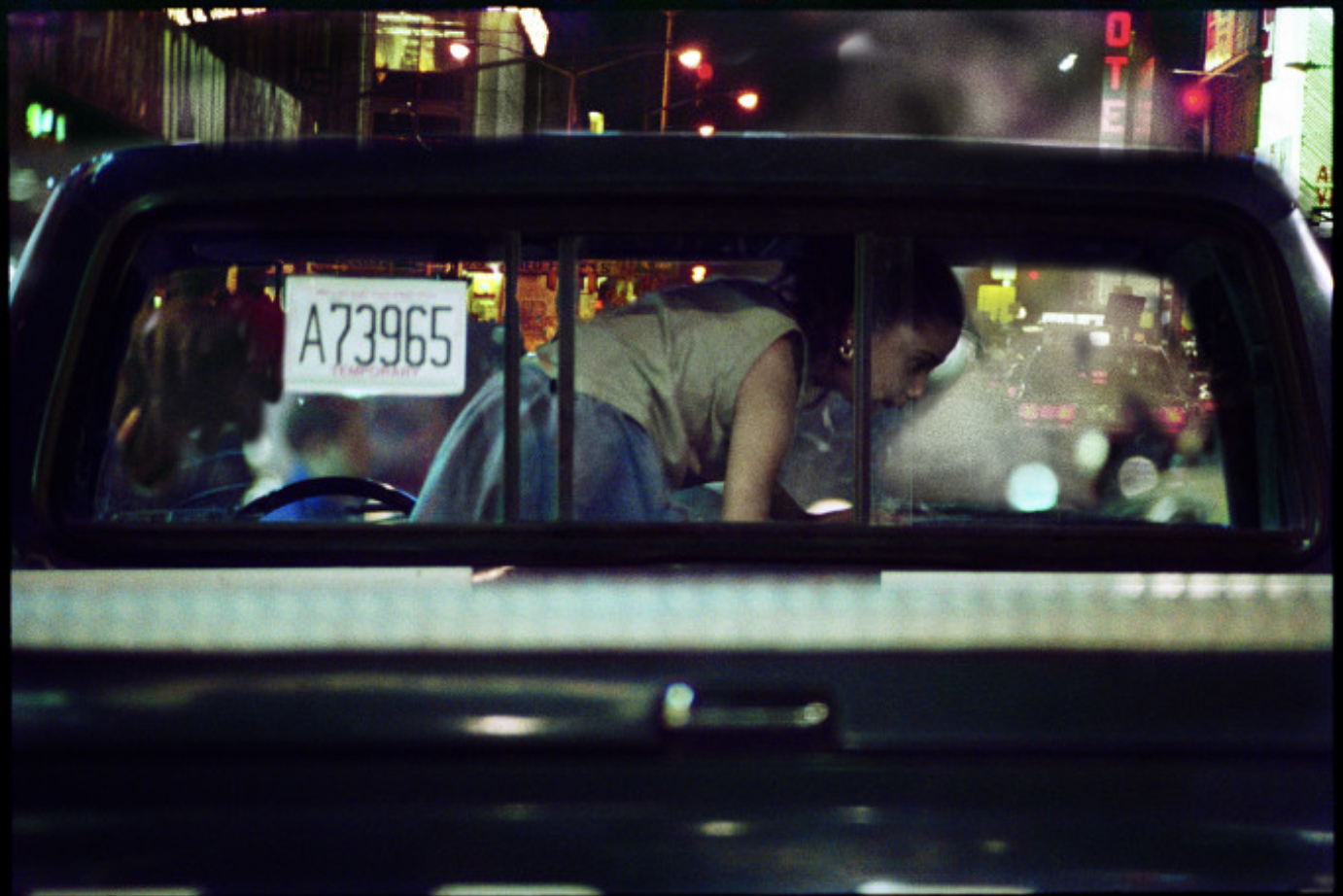



Henson’s illustrious career has spanned four decades and was memorably marred by controversy over a series of nude adolescent photographs shown in 2008, which made him front-page news for weeks. This series of portraits made Henson the subject of a police investigation during which no offence was found.
In recent years, Henson has been a sharp critic of cancel culture, encouraging artists to contribute something that will have lasting value and add to the conversation, rather than tearing down the past.

His work deals with the liminal space between the mystical and the real, the seen and unseen, the boundary between youth and adulthood.
His famous Paris Opera Project, 1990-91, pictured above, is similarly intense as the current show, dwelling on the border between the painterly and the cinematic.
Bill Henson’s ‘The Liquid Night’ runs until 11 May 2024 at Roslyn Oxley9 Gallery.
Roslyn Oxley9 Gallery, 8 Soudan Ln, Paddington NSW; roslynoxley9.com.au
You may also like.
Polar Opposites
A journey north to one of the harshest, remotest spots on Earth couldn’t be more luxurious.
A century ago, an expedition to the North Pole involved dog sleds and explorers in heavy, fur-lined clothes, windburned and famished after weeks of trudging across ice floes, finally planting their nations’ flags in the barren landscape. These days, if you’re a tourist, the only way to reach 90 degrees north latitude, the geographic North Pole, is aboard Le Commandant Charcot, a six-star hotel mated to a massive, 150-metre ice-breaking hull.
My wife, Cathy, and I are among the first group of tourists aboard Ponant’s new expedition icebreaker, the world’s only Polar Class 2–rated cruise ship (of seven levels of ice vessel, second only to research and military vessels in ability to manoeuvre in Arctic conditions). Our arrival on July 14 couldn’t be more different from explorer Robert Peary’s on April 6, 1909. On that date, he reported, he staked a small American flag—sewed by his wife—into the Pole, joined by four Inuits and his assistant, Matthew Henson, a Black explorer from Maine who was with Peary on his two previous Arctic expeditions. (Peary’s claim of being first to the Pole was quickly disputed by another American, Frederick Cook, who insisted he’d spent two days there a year earlier. Scholars now view both claims with skepticism.)
Our 300-plus party’s landing, on Bastille Day, features the captain of the French ship driving around in an all-terrain vehicle with massive wheels and an enormous tricolour flag on the back, guests dressed in stylish orange parkas celebrating on the ice, and La Marseillaise, France’s national anthem, blaring from loudspeakers. After an hour of taking selfies and building snow igloos in the icescape, with temperatures in the relatively balmy low 30s, we head back into our heated sanctuary for mulled wine and freshly baked croissants. Mission accomplished. Flags planted. Now, lunch.
As a kid, I was fascinated by stories of adventurers trying to reach the North Pole without any means of rescue. In the 19th century, most of their attempts ended in disaster—ships getting trapped in the ice, a hydrogen balloon crashing, even cannibalism. It wasn’t until Cook and Peary reportedly set foot there that the race to the North Pole was really on. Norwegian Roald Amundsen, the first to reach the South Pole, in 1911, is credited with being the first to document a trip over the North Pole, which he did in 1926 in the airship Norge. In 1977, the nuclear-powered icebreaker Arktika became the first surface vessel to make it to the North Pole. Since then, only 18 other ships have completed the voyage.
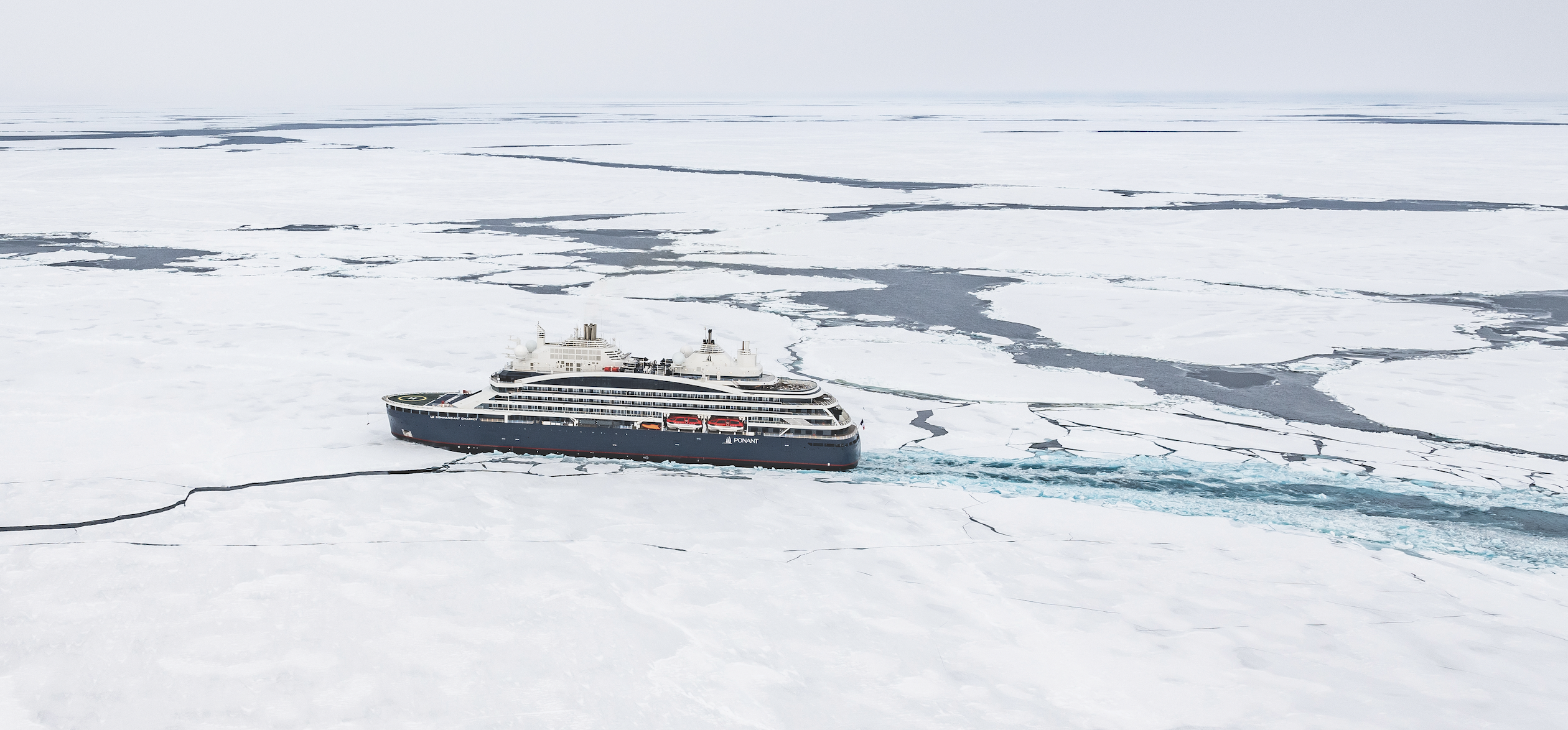
Visiting the North Pole seemed about as likely for me as walking on the Moon. It wasn’t even on my bucket list. Then came Le Commandant Charcot, which was named after France’s most beloved polar explorer and reportedly cost about US$430 million (around $655 million) to build. The irony of visiting one of the planet’s most remote and inhospitable points while travelling in the lap of luxury doesn’t escape me or anyone else I speak with on the voyage. Danie Ferreira, from Cape Town, South Africa, describes it as “an ensemble of contradictions bordering on the absurd”. Ferreira, who is on board with his wife, Suzette, is a veteran of early-explorer-style high-Arctic journeys, months-long treks involving dog sleds and real toil and suffering. He booked this trip to obtain an official North Pole stamp for an upcoming two-volume collection of his photographs, Out in the Cold, documenting his polar adventures. “Reserving the cabin felt like a betrayal of my expeditionary philosophy,” he says with a laugh.
Then, like the rest of us, he embraces the contradictions. “This is like the first time I saw the raw artistry of Cirque du Soleil,” he explains. “Everything is beyond my wildest expectations, unrelatable to anything I’ve experienced.”
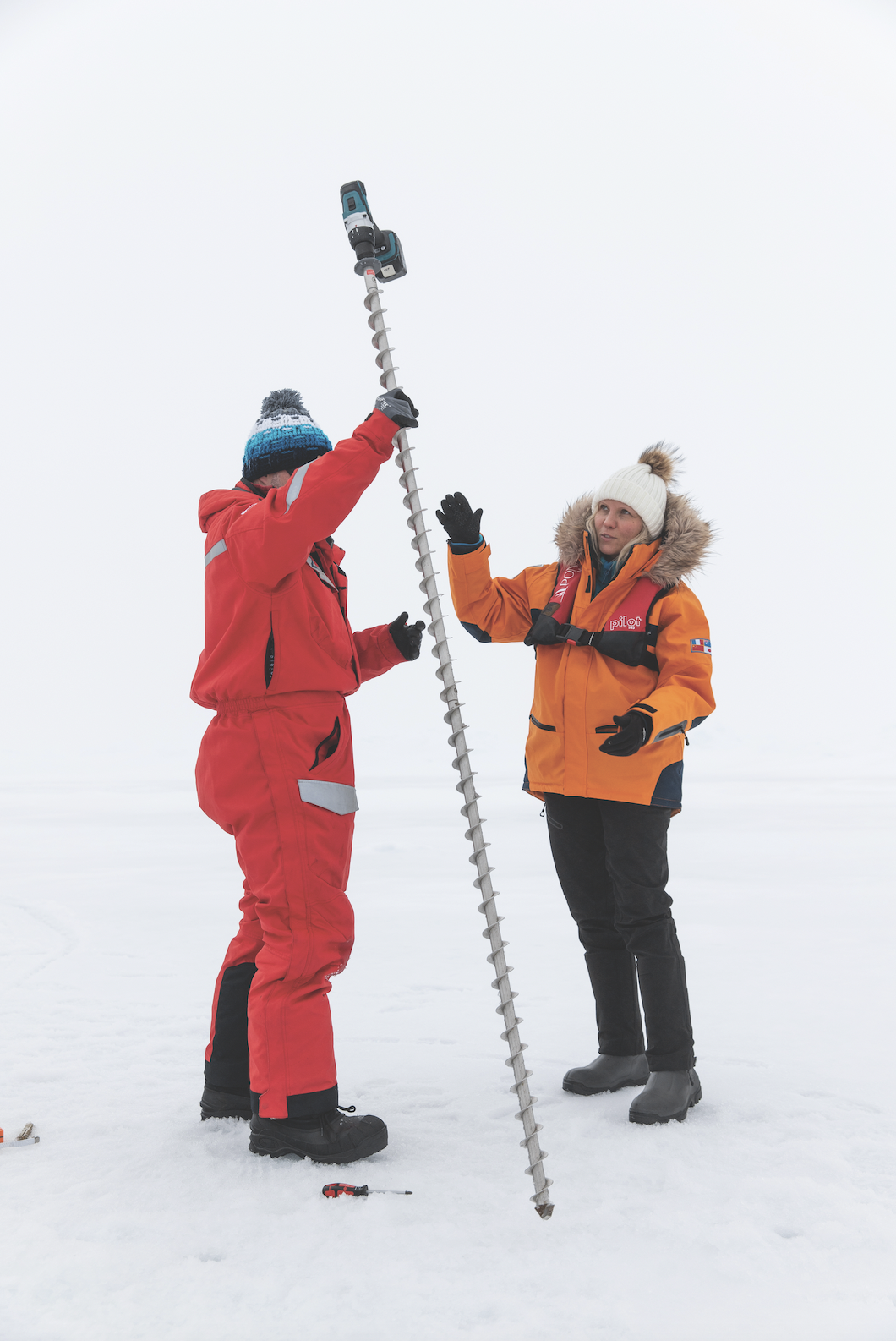
The 17-day itinerary launches from the Norwegian settlement of Longyearbyen, Svalbard, the northernmost town in the Arctic Circle, and heads 1,186 nautical miles to the North Pole, then back again. As a floating hotel, the vessel is exceptional: 123 balconied staterooms and suites, the most expensive among them duplexes with butler service (prices range from around $58,000 to $136,000 per person, double occupancy); a spa with a sauna, massage therapists, and aestheticians; a gym and heated indoor pool. The boat weighs more than 35,000 tons, enabling it to break ice floes like “a chocolate bar into little pieces, rather than slice through them”, according to Captain Patrick Marchesseau. Six-metre-wide stainless-steel propellers, he adds, were designed to “chew ice like a blender”.
Marchesseau, a tall, lanky, 40-ish mariner from Brittany, impeccable in his navy uniform but rocking royal-blue boat shoes, proves to be a charming host. Never short of a good quip, he’s one of three experienced ice captains who alternate at the helm of Charcot throughout the year. He began piloting Ponant ships through drifting ice floes in Antarctica in 2009, when he took the helm of Le Diamant, Ponant’s first expedition vessel. “An epic introduction,” Marchesseau calls those early voyages, but the isolated, icebound North Pole aboard a larger, more complicated vessel is potentially an even thornier challenge. “We’ll first sail east where the ice is less concentrated and then enter the pack at 81 degrees,” he tells a lecture hall filled with passengers on day one. “We don’t plan to stop until we get to the North Pole.”
Around us, the majority of the other 101 guests are older French couples; there are also a few extended families, some other Europeans, mostly German and Dutch, as well as 10 Americans. Among the supporting cast are six research scientists and 221 staff, including 18 naturalist guides from a variety of countries.
The first six days are more about the journey than the destination. Cathy and I settle into our comfortable stateroom, enjoy the ocean views from our balcony, make friends with other guests and naturalists, frequent the spa, and indulge in the contemporary French cuisine at Nuna, which is often jarred by ice passing under the hull, as well as at the more casual Sila (Inuit for “sky”). There are the usual cruise events: the officers’ gala, wine pairings, daily French pastries, Broadway-style shows, opera singers and concert pianists. Initially, I worry about “Groundhog Day” setting in, but once we hit patchy ice floes on day two, it’s clear that the polar party is on. The next day, we’re ensconced in the ice pack.
Veterans of Arctic journeys immediately feel at home. Ferreira, often found on the observation deck 15 metres above the ice with his long-lensed cameras, is in his element snapping different patterns and colours of the frozen landscape. “It feels like combining low-level flying with an out-of-body experience,” he says. “Whenever the hull shudders against the ice, I have a reality check.”
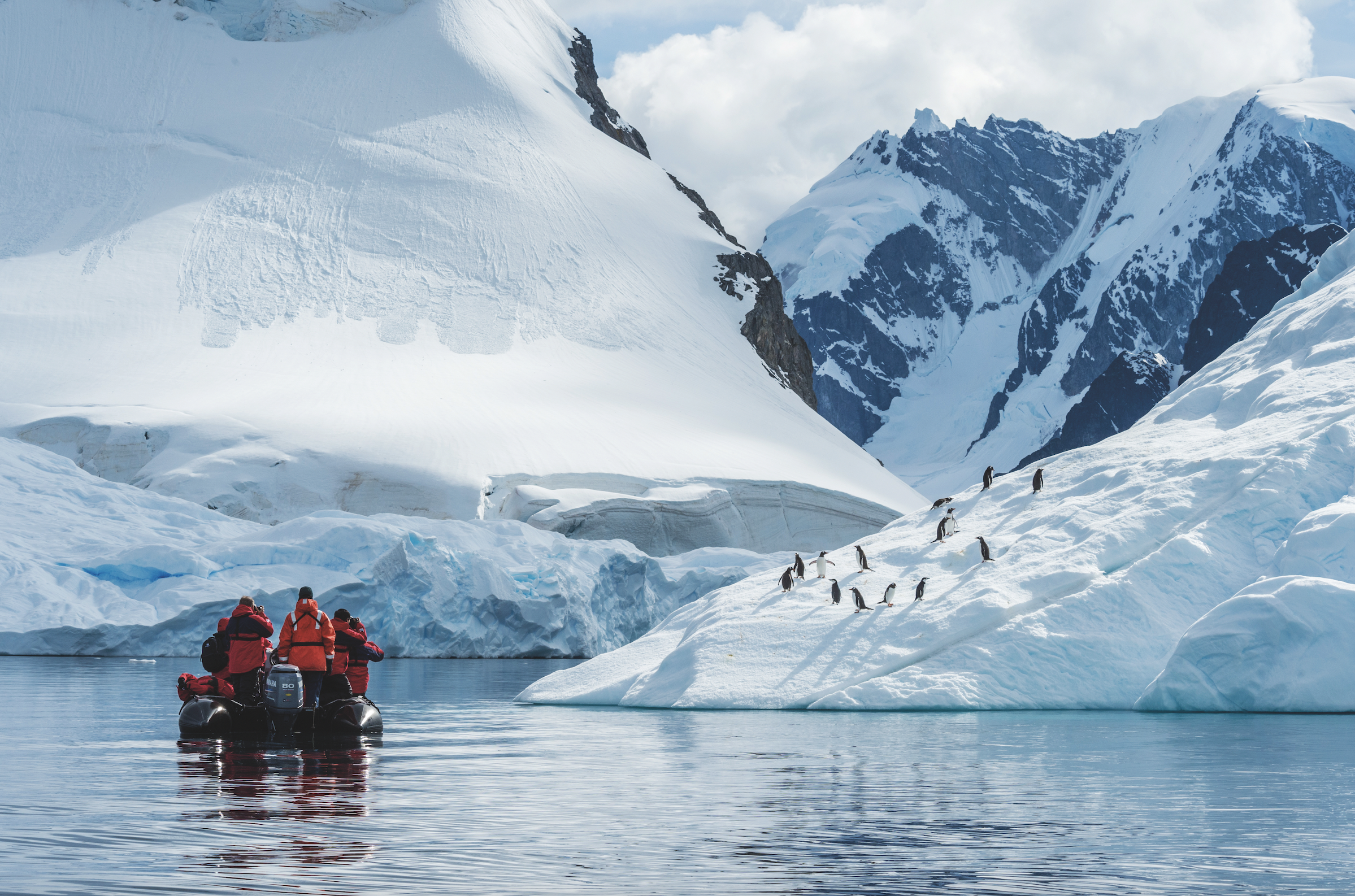
“I came back because I love this ice,” adds American Gin Millsap, who with her husband, Jim, visited the North Pole in 2015 aboard the Russian nuclear icebreaker Fifty Years of Victory, which for obvious reasons is no longer a viable option for Americans and many Europeans. “I love the peace, beauty and calmness.”
It is easy to bliss out on the endless barren vistas, constantly morphing into new shapes, contours and shades of white as the weather moves from bright sunshine to howling snowstorms—sometimes within the course of a few hours. I spend a lot of time on the cold, windswept bow, looking at the snow patterns, ridges and rivers flowing within the pale landscape as the boat crunches through the ice. It feels like being in a black-and-white movie, with no colours except the turquoise bottoms of ice blocks overturned by the boat. Beautiful, lonely, mesmerising.
Rather than a solid landmass, the Arctic ice pack is actually millions of square kilometres of ice floes, slowly pushed around by wind and currents. The size varies according to season: this past winter, the ice was at its fifth-lowest level on record, encompassing 14.6 million square kilometres, while during our cruise it was 4.7 million square kilometres, the 10th-lowest summer number on record. There are myriad ice types—young ice, pancake ice, ice cake, brash ice, fast ice—but the two that our ice pilot, Geir-Martin Leinebø, cares about are first-year ice and old ice. The thinness of the former provides the ideal route to the Pole, while the denseness of the aged variety can result in three-to-eight-metre-high ridges that are potentially impassable. Leinebø is no novice: in his day job, he’s the captain of Norway’s naval icebreaker, KV Svalbard, the first Norwegian vessel to reach the North Pole, in 2019.
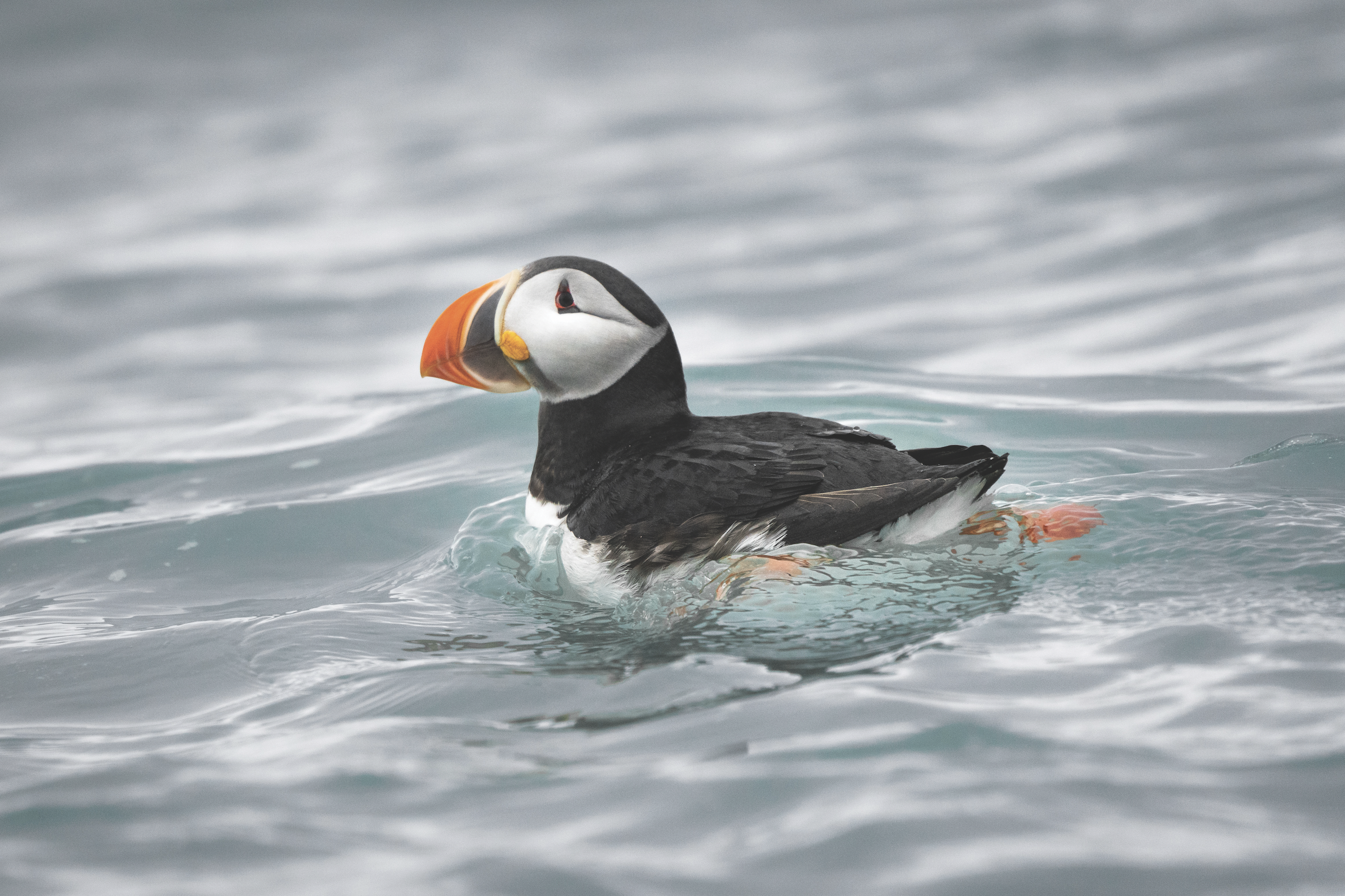
It’s not a matter of just pointing the boat due north and firing up the engine. Leinebø zigzags through the floes. A morning satellite feed and special software aid in determining the best route; the ship’s helicopter sometimes scouts 65 or so kilometres ahead, and there’s a sonar called the Sea Ice Monitoring System (SIMS). But mostly Leinebø uses his eyes. “You look for the weakest parts of the ice—you avoid the ridges because that means thickness and instead look for water,” he says. “If the ‘water sky’ in the distance is dark, it’s reflecting water like a mirror, so you head in that direction.”
Everyone on the bridge is surprised by the lack of multi-year ice, but with more than a hint of disquietude. Though we don’t have to ram our way through frozen ridges, the advance of climate change couldn’t be more apparent. Environmentalists call the Arctic ice sheet the canary in the coal mine of the planet’s climate change for good reason: it is happening here first. “It’s not right,” mutters Leinebø. “There’s just too much open water for July. Really scary.”
The Arctic ice sheet has shrunk to about half its 1985 size, and as both mariners and scientists on board note, the quality of the ice is deteriorating. “It’s happening faster than our models predicted,” says Marisol Maddox, senior arctic analyst at the Polar Institute of the Woodrow Wilson International Center for Scholars. “We’re seeing major events like Greenland’s ice sheet melting and sliding into the ocean—that wasn’t forecasted until 2070.” The consensus had been that the Arctic would be ice-free by 2050, but many scientists now expect that day to come in the 2030s.
That deterioration, it turns out, is why the three teams of scientists are on the voyage—two studying the ice and the other assessing climate change’s impact on plankton. As part of its commitment to sustainability, Ponant has designed two research labs—one wet and one dry—on a lower deck. “We took the advice of many scientists for equipping these labs,” says Hugues Decamus, Charcot’s chief engineer, clearly proud of the nearly US$12 million facilities.
The combined size of the labs, along with a sonar room, a dedicated server for the scientists, and a meteorological station on the vessel’s top deck, totals 130 square metres—space that could have been used for revenue generation. Ponant also has two staterooms reserved for scientists on each voyage and provides grants for travel expenses. The line doesn’t cherrypick researchers but instead asks the independent Arctic Research Icebreaker Consortium (ARICE) to choose participants based on submissions.
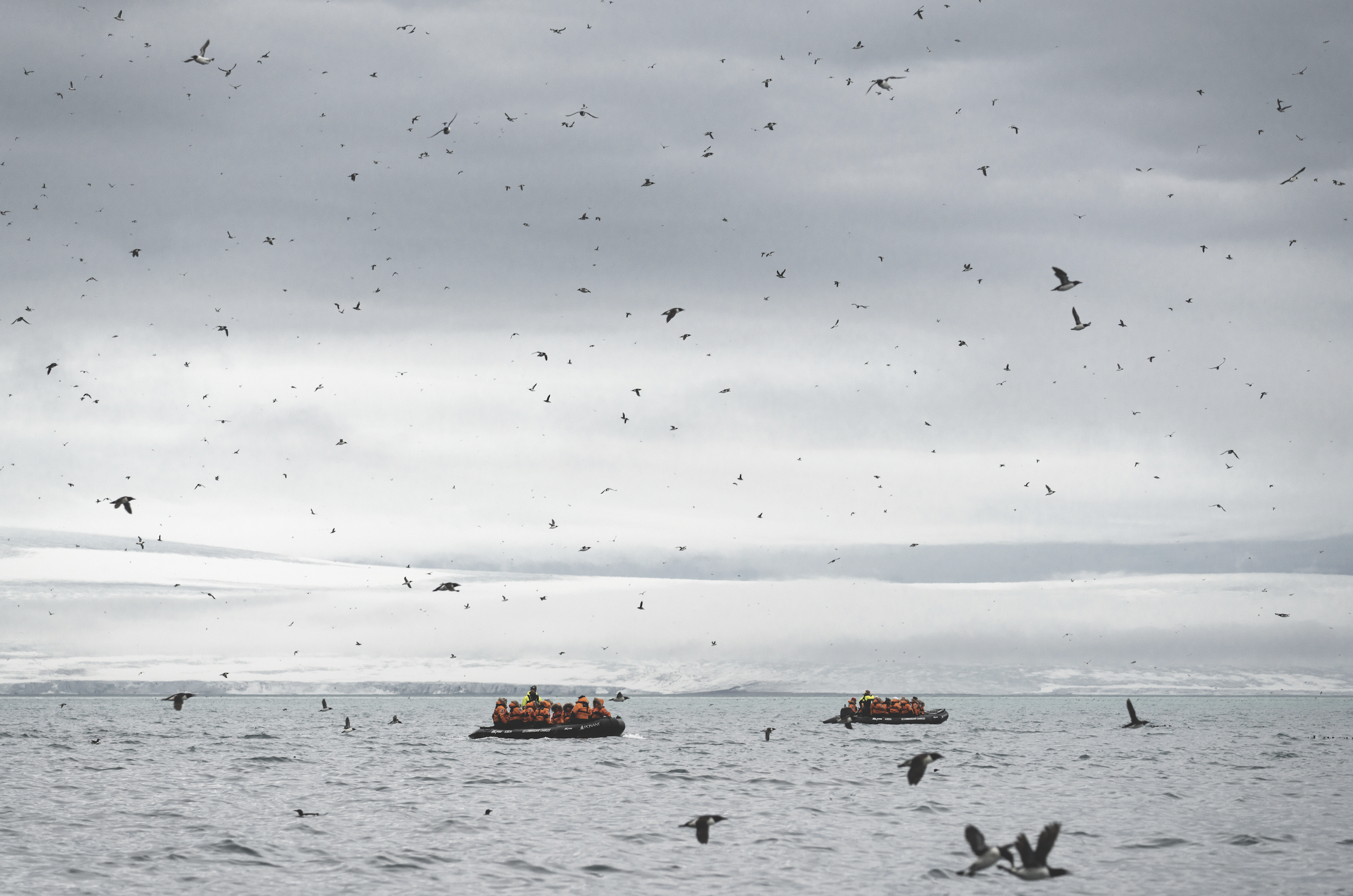
The idea, says the vessel’s science officer on this voyage, Daphné Buiron, is to make the process transparent and minimise the appearance of greenwashing. “Yes, this alliance may deliver a positive public image for the company, but this ship shows we do real science on board,” she says. The labs will improve over time, adds Decamus, as the ship amasses more sophisticated equipment.
Research scientists and tourist vessels don’t typically mix. The former, wary of becoming mascots for the cruise lines’ sustainability marketing efforts, and cognisant of the less-than-pristine footprint of many vessels, tend to be wary. The cruise lines, for their part, see scientists as potentially high maintenance when paying customers should be the priority. But there seemed to be a meeting of the minds, or at least a détente, on Le Commandant Charcot.
“We discuss this a lot and are aware of the downsides, but also the positives,” says Franz von Bock und Polach, head of the institute for ship structural design and analysis at Hamburg University of Technology, specialising in the physics of sea ice. Not only does Charcot grant free access to these remote areas, but the ship will also collect data on the same route multiple times a year with equipment his team leaves on board, offering what scientists prize most: repeatability. “One transit doesn’t have much value,” he says. “But when you measure different seasons, regions and years, you build up a more complex picture.” So, more than just a research paper: forecasts of ice conditions for long-term planning by governments as the Arctic transforms.
Nils Haëntjens, from the University of Maine, is analysing five-millilitre drops of water on a high-tech McLane IFCB microscope. “The instrument captures more than 250,000 images of phytoplankton along the latitudinal transect,” he says. Charcot has doors in the wet lab that allow the scientists to take water samples, and in the bow, inlets take in water without contaminating it. Two freezers can preserve samples for further research back in university labs.
Even though the boat won’t stop, the captain and chief engineer clearly want to make the science missions work. Marchesseau dispatches the helicopter with the researchers and their gear 100 kilometres ahead, where they take core samples and measurements. I spot them in their red snowsuits, pulling sleds on an ice floe, as the boat passes. Startled to see living-colour humans on the ice after days of monochrome, I feel a pang of jealousy as I head for a caviar tasting.
The only other humans we encounter on the journey north are aboard Fifty Years of Victory, the Russian icebreaker. The 160-metre orange- and-black leviathan reached the North Pole a day earlier—its 59th visit—and is on its way back to Murmansk. It’s a classic East meets West moment: the icebreaker, launched just after the collapse of the Soviet Union, meeting the new standard of polar luxury.
The evening before Bastille Day, Le Commandant Charcot arrives at the North Pole. Because of the pinpoint precision of the GPS, Marchesseau has to navigate back and forth for about 20 minutes—with a bridge full of passengers hushing each other so as not to distract him—until he finds 90 degrees north. That final chaotic approach to the top of the world in the grey, windswept landscape looks like a kid’s Etch A Sketch on the chartplotter, but it is met with rousing cheers. The next morning, with good visibility and light winds, we spill out onto the ice for the celebration, followed by a polar plunge.
As guests pose in front of flags and mile markers for major cities, the naturalist guides, armed with rifles, establish a wide perimeter to guard against polar bears. The fearless creatures are highly intelligent, with razor-sharp teeth, hooked claws and the ability to sprint at 40 km/h. Males average about three metres tall and weigh around 700 kilos. They are loners that will kill anything—including other bears and even their own cubs. Cathy and I walk around the far edges of the perimeter to enjoy some solitude. Looking out over the white landscape, I know this is a milestone. But it feels odd that getting here didn’t involve any sweat or even a modicum of discomfort.
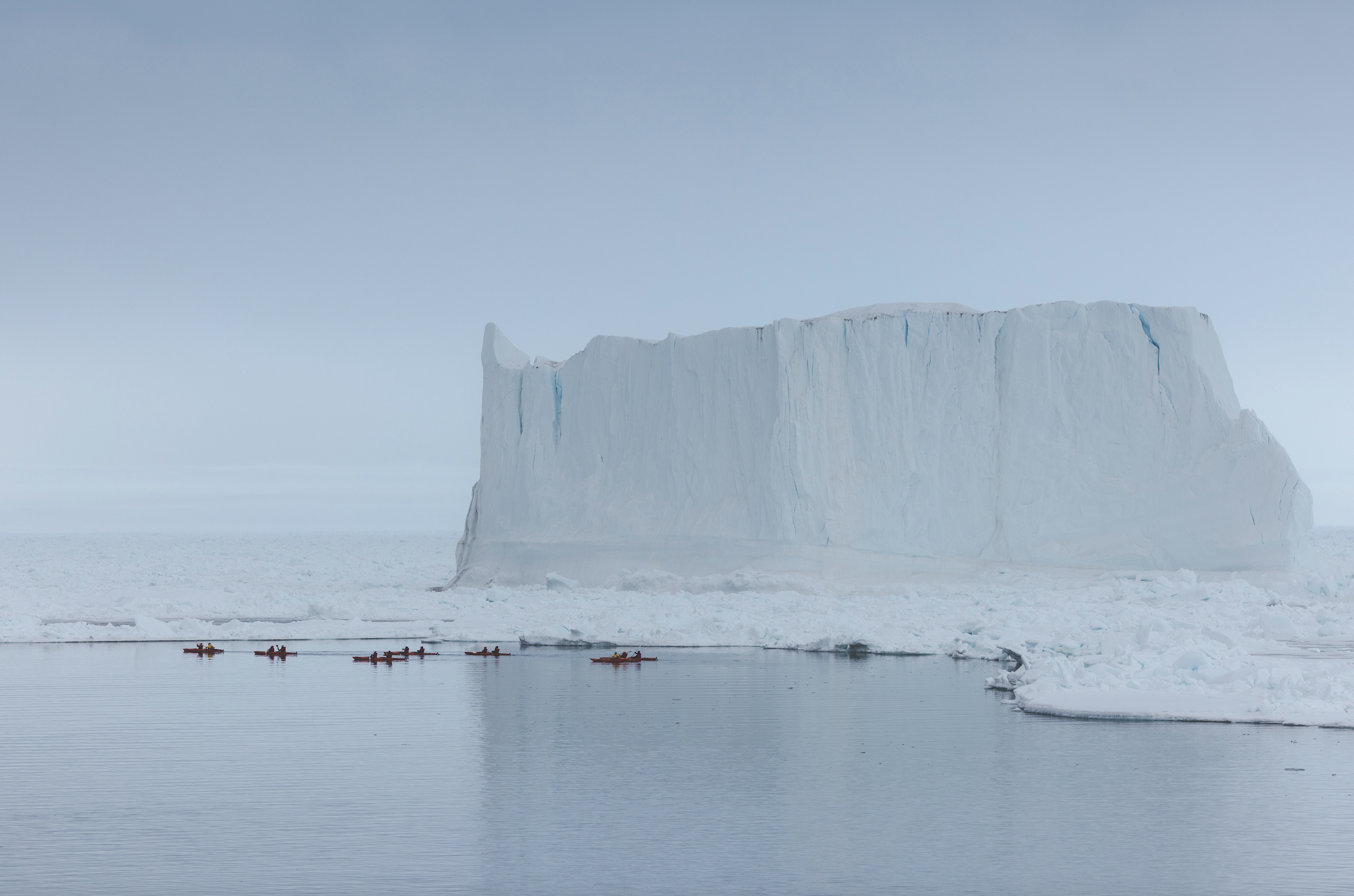
The rest of the week is an entirely different trip. On the return south, we see a huge male polar bear ambling on the ice, looking over his shoulder at us. It is our first sighting of the Arctic’s apex predator, and everyone crowds the observation lounge with long-lensed cameras. The next day, we see another male, this one smaller, running away from the ship. “They have many personalities,” says Steiner Aksnes, head of the expedition team, who has led scientists and film crews in the Arctic for 25 years. We see a dozen on the return to Svalbard, where 3,000 are scattered across the archipelago, outnumbering human residents.
The last five days we make six stops on different islands, travelling by Zodiac from Charcot to various beaches. On Lomfjorden, as we look on a hundred yards from shore, a mother polar bear protects her two cubs while a young male hovers in the background. On a Zodiac ride off Alkefjellet, the air is alive with birds, including tens of thousands of Brünnich’s guillemots as well as glaucous gulls and kittiwakes, which nest in that island’s cliffs, while a young male polar bear munches on a ring seal, chin glistening red.
On this part of the trip, the expedition team, mostly 30-something, free-spirited scientists whose areas of expertise range from botany to alpine trekking to whales, lead hikes across different landscapes. The jam-packed schedule sometimes involves three activities per day and includes following the reindeer on Palanderbukta, seeing a colony of 200 walruses on Kapp Lee, hiking the black tundra of Burgerbukta (boasting 3.8-cm-tall willows—said to be the smallest trees in the world and the largest on Svalbard—plus mosquitoes!), watching multiple species of whales breaching offshore, and kayaking the ice floes of Ekmanfjorden. Svalbard is a protected wilderness area, and the cruise lines tailor their schedules so vessels don’t overlap, giving visitors the impression they are setting foot on virgin land.
Chances to experience that sense of discovery and wonder, even slightly stage-managed ones, are dwindling along with the ice sheet and endangered wildlife. If a stunning trip to a frozen North Pole is on your bucket list, the time to go is now.
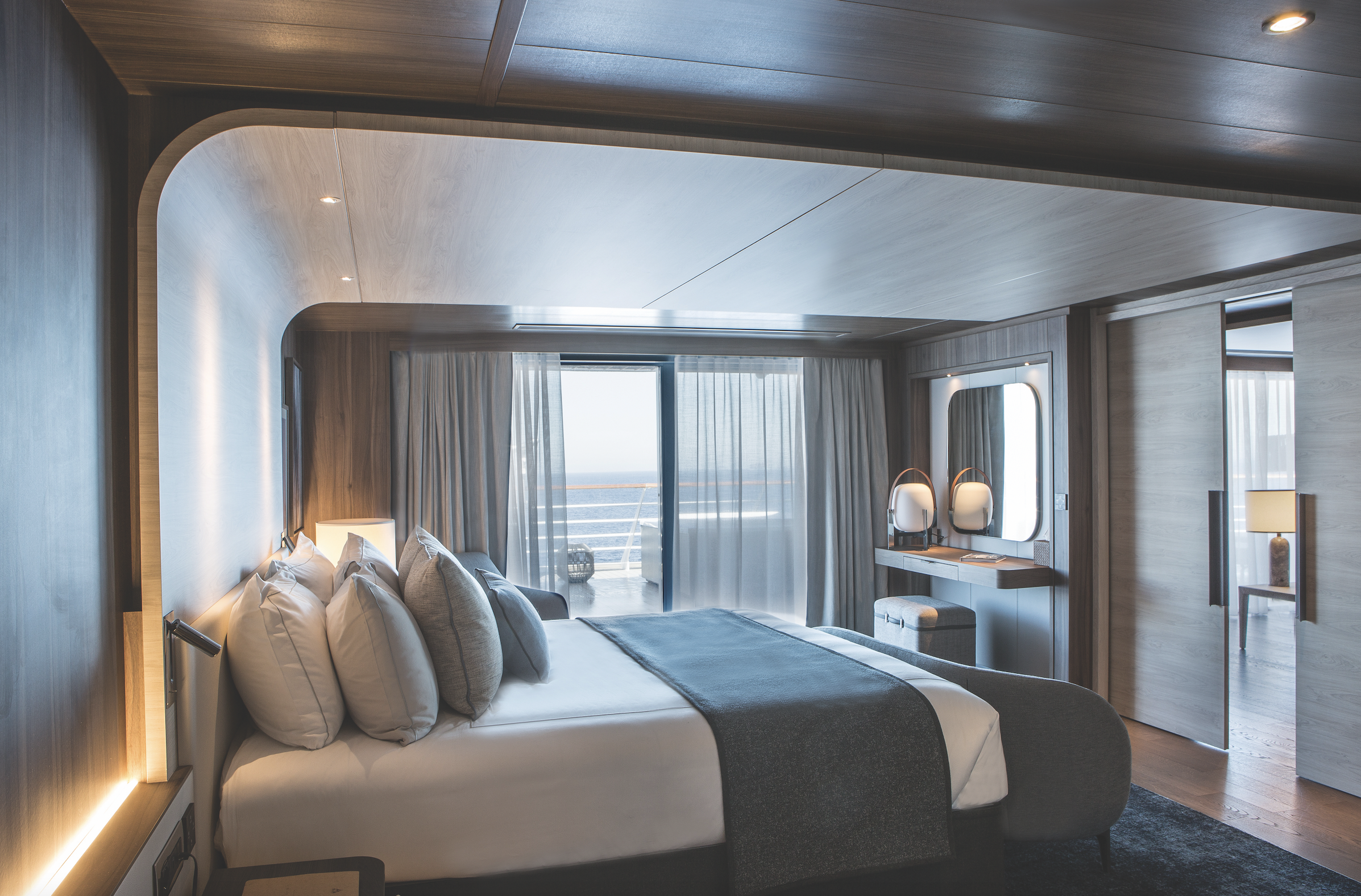
PARADIGM SHIP
For those studying polar ice, a berth aboard Le Commandant Charcot is like a winning lottery ticket. “This cruise ship is one of the few resources scientists can use, because nothing else can get there,” says G. Mark Miller, CEO of research-vessel builder Greenwater Marine Sciences Offshore (GMSO) and a former ship captain for the US National Oceanic and Atmospheric Administration (NOAA). “Then factor in 80 percent of scientists who want to go to sea, can’t, because of the shortage of research vessels.”
Both Ponant and Viking have designed research labs aboard new expedition vessels as part of their sustainability initiatives. “Remote areas like Antarctica need more data—the typical research is just single data points,” says Damon Stanwell-Smith, Ph.D., head of science and sustainability at Viking. “Every scientist says more information is needed.” The twin sisterships Viking Octantis and Viking Polaris, which travel to Antarctica, Patagonia, the Great Lakes and Canada, have identical 35-square-metre labs, separated into wet and dry areas and fitted out with research equipment. In hangars below are military-grade rigid-hulled inflatables and two six-person yellow submersibles (the pair on Octantis are named John and Paul, while Polaris’s are George and Ringo). Unlike Ponant, Viking doesn’t have an independent association choose scientists for each voyage. Instead, it partners with the University of Cambridge, the Cornell Lab of Ornithology, and NOAA, which send their researchers to work with Viking’s onboard science officers.
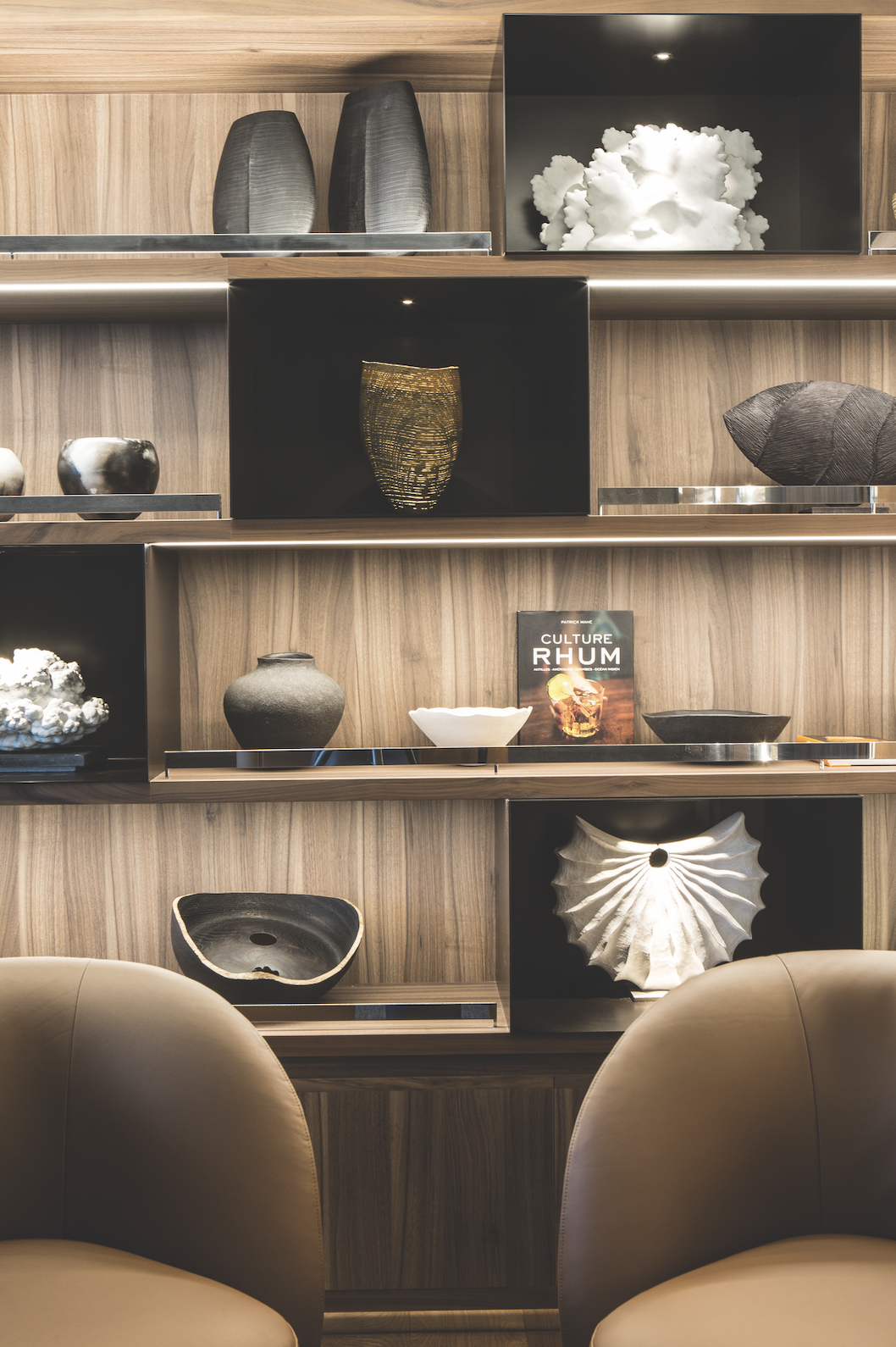
“Some people think marine research is sticking some kids on a ship to take measurements,” says Stanwell-Smith. “But we know we can do first-rate science—not spin.” Other cruise lines are also embracing sustainability initiatives, with coral-reef-restoration projects and water-quality measurements, usually in partnership with universities. Just about every vessel has “citizen-scientist” research programs allowing guests the opportunity to count birds or pick up discarded plastic on beaches. So far, Ponant and Viking are the only lines with serious research labs. Ponant is adding science officers to other vessels in its fleet. As part of the initiatives, scientists deliver onboard lectures and sometimes invite passengers to assist in their research.
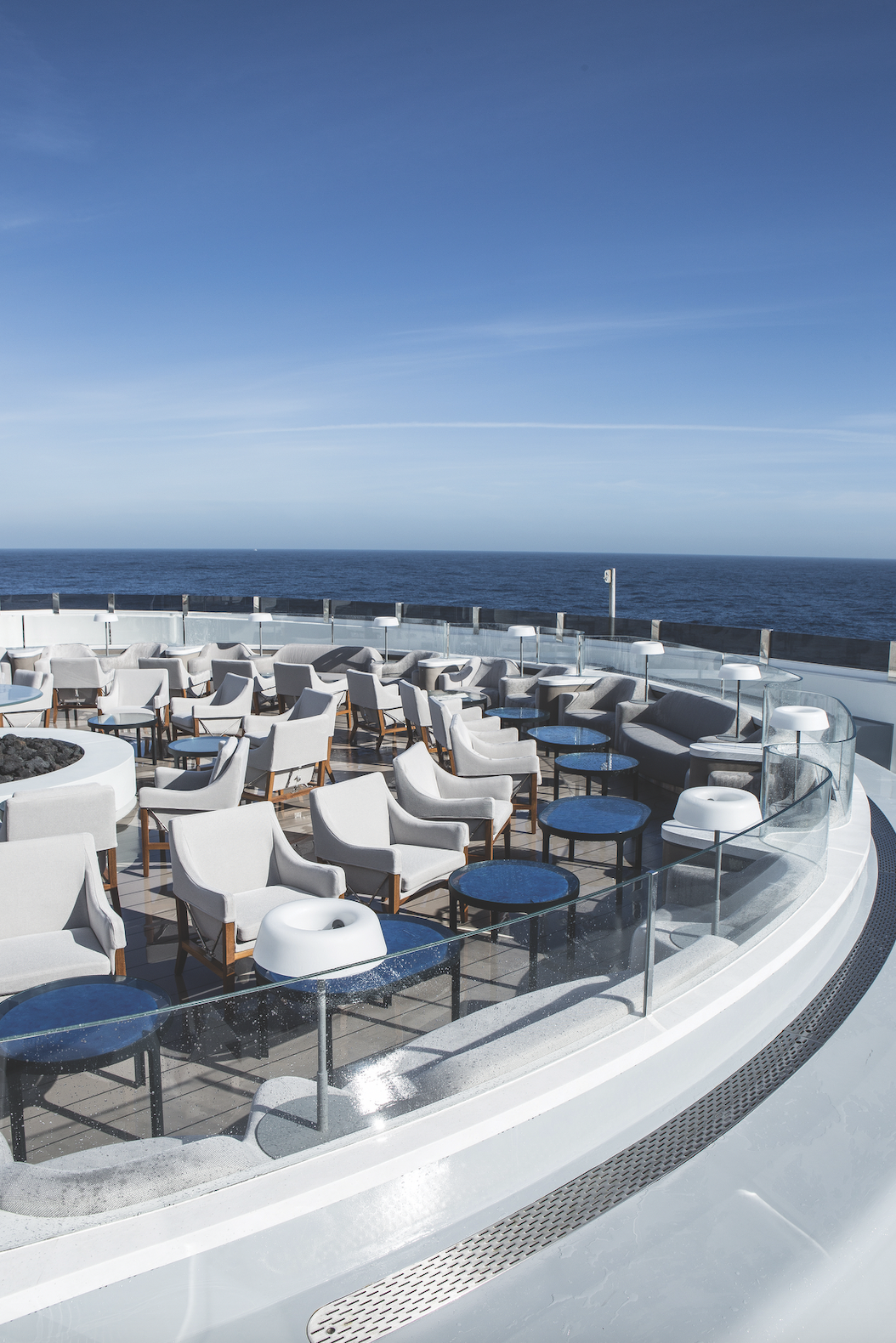
Given the shortage of research vessels, Stanwell-Smith thinks this passenger-funded system will coexist nicely with current NGO- and government-owned ships. “This could be a new paradigm for exploring the sea,” he says. “Maybe the next generation of research vessels will look like ours.”
You may also like.
Watch of the Week: the Piaget Altiplano Ultimate Concept Tourbillon
The new release claims the throne as the world’s thinnest Tourbillon.
Piaget, the watchmaker’s watchmaker, has once again redefined the meaning of “ultra-thin” thanks to its newest masterpiece, the Altiplano Ultimate Concept Tourbillon—the world’s thinnest tourbillon watch.
In the world of high-watchmaking where thin is never thin enough—look at the ongoing battle between Piaget, Bulgari, and Richard Mille for the honours—Piaget caused a furore at Watches & Wonders in Geneva when it unveiled its latest feat to coincide with the Maison’s 150th year anniversary.
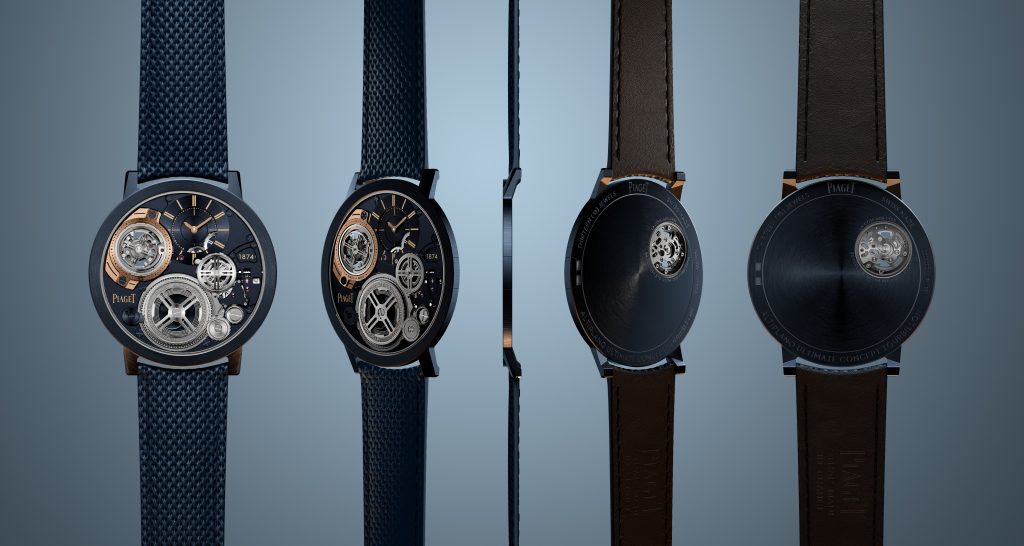
Piaget claims that the new Altiplano is “shaped by a quest for elegance and driven by inventiveness”, and while this might be true, it’s clear that the Maison’s high-watchmaking divisions in La Côte-aux-Fées and Geneva are also looking to end the conversation around who owns the ultra-thin watchmaking category.
The new Altiplano pushes the boundaries of horological ingenuity 67 years after Piaget invented its first ultra-thin calibre—the revered 9P—and six years after it presented the world’s then-thinnest watch, the Altiplano Ultimate Concept. Now, with the release of this unrivalled timepiece at just 2mm thick—the same as its predecessor, yet now housing the beat of a flying tourbillon, prized by watchmaking connoisseurs—you can’t help but marvel at its ultra-thin mastery, whether the timepiece is to your liking or not.
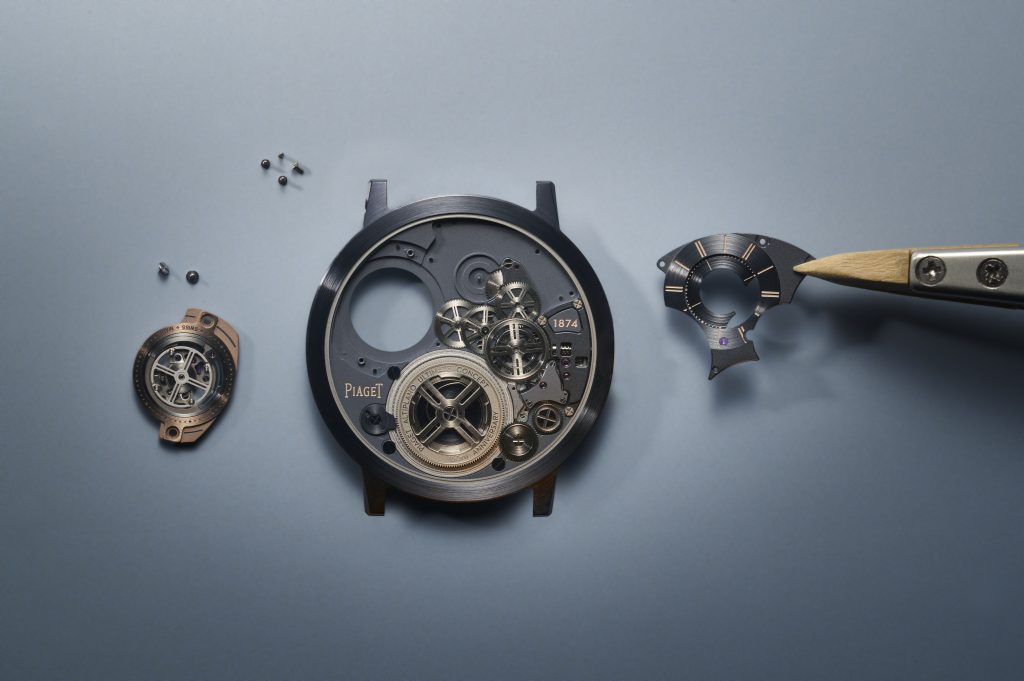
In comparison, the Bulgari Octo Finissimo Tourbillon was 3.95mm thick when unveiled in 2020, which seems huge on paper compared to what Piaget has been able to produce. But to craft a watch as thin and groundbreaking as its predecessor, now with an added flying tourbillon complication, the whole watchmaking process had to be revalued and reinvented.
“We did far more than merely add a tourbillon,” says Benjamin Comar, Piaget CEO. “We reinvented everything.”
After three years of R&D, trial and error—and a redesign of 90 percent of the original Altiplano Ultimate Concept components—the 2024 version needs to be held and seen to be believed. The end product certainly isn’t a watch for the everyday watch wearer—although Piaget will tell you otherwise—but in many ways, the company didn’t conjure a timepiece like the Altiplano as a profit-seeking exercise. Instead, overcoming such an arduous and technical watchmaking feat proves that Piaget can master the flying tourbillon in such a whimsical fashion and, in the process, subvert the current state-of-the-art technical principles by making an impactful visual—and technical—statement.
The only question left to ask is, what’s next, Piaget?
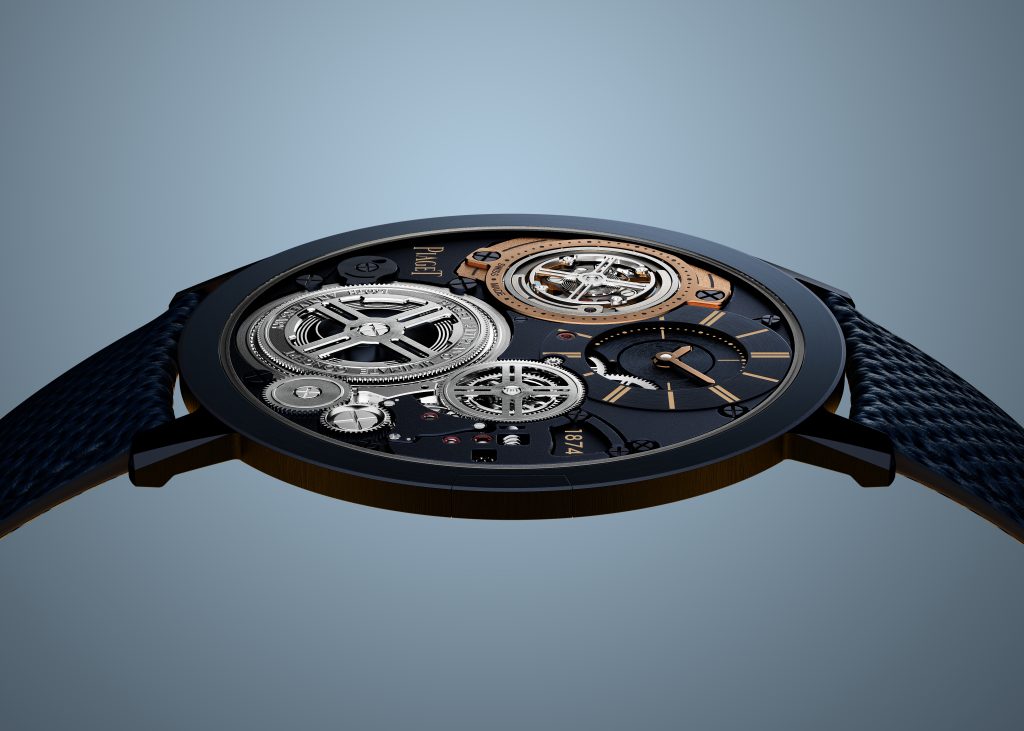
—
Model: Altiplano Ultimate Concept Tourbillon 150th Anniversary
Diameter: 41.5 mm
Thickness: 2 mm (crystal included)
Material: M64BC cobalt alloy, blue PVD -treated
Dial: Monobloc dial; polished round and baton indices, Bâton-shaped hand for the minutes Monobloc disc with a hand for the hours
Water resistance: 20m
Movement: Calibre 970P-UC, one-minute peripheral tourbillon
Winding: Hand-wound
Functions: hours, minutes, and small seconds (time-only)
Power reserve: 40 hours
Availability: Limited production, not numbered
Price: Price on request








